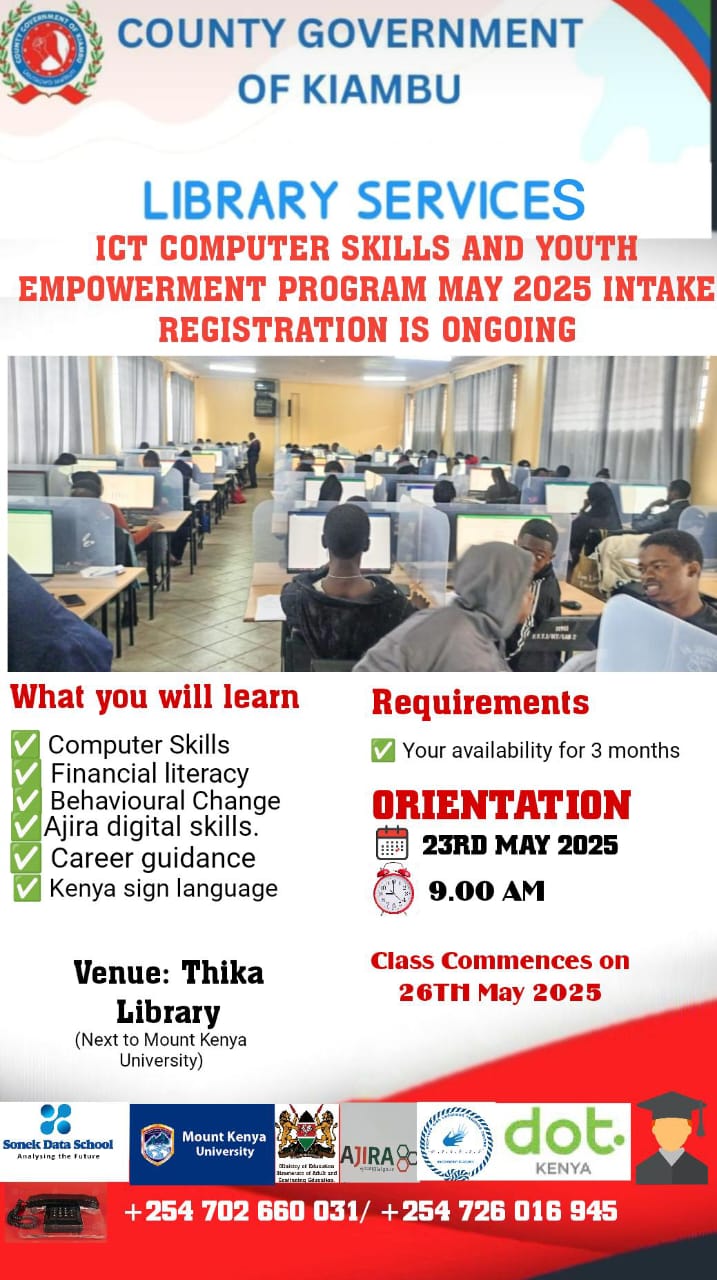County Lays Plan To Expand Health Infrastructure
Three weeks ago, the projected multi-million Thogoto Level Four Hospital in Kikuyu, Kiambu County, welcomed you with a tethered goat grazing freely in an untidy compound of shrubs, long grass, and destroyed concrete walls.
Launched more than seven years ago by the county government, the facility was planned to be a 150-bed, cutting-edge hospital that would serve the densely populated Kikuyu sub-county and parts of the adjacent Ndeiya in Limuru, which for years had been required to travel miles to the Kiambu, Tigoni, and Wangige hospitals.
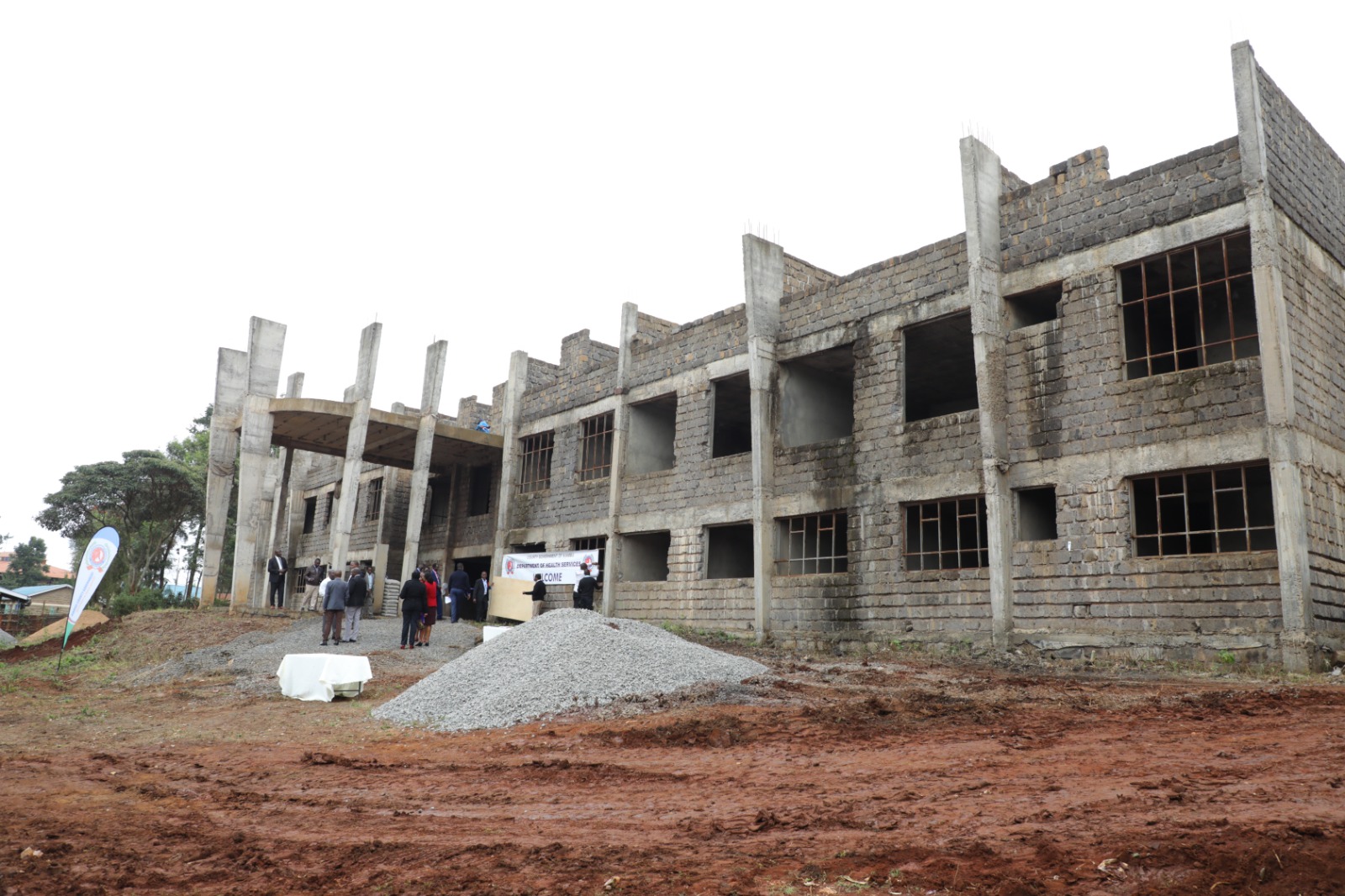
The building was quickly characterized as a “white elephant” because it took longer to build than expected due to tense relations between the contractor and the regional administration over the latter’s failure to pay outstanding invoices, ultimately leading to the contractor leaving the construction site.
Instead of drawing patients, it attracted criminals and street families who looted and vandalized building supplies, turning it into a place to sleep.
“The project was initially intended to be completed to improve the community, but it has only served to attract thieves, making us feel guilty and anguished. Additionally, people come here to graze their livestock because no one maintains the compound. A local of the Thogoto area, Joseph Kimani, stated that robbers also allegedly tore down fences to steal building stones for sale.
Six level four hospitals launched in 2016 and 2018 have all been in this situation since the previous administration didn’t pay the contractors and made them leave the project sites, which would have expanded the county’s hospital capacity by roughly 1,600 beds.
However, after Governor Kimani Wamatangi revived the six hospital projects and began the elevation of Gachororo and Karuri level three facilities in Juja and Kiambaa, respectively, by constructing 200-bed wings in each of them, the county is expected to increase its hospital.
“Work has now resumed, and by December, we anticipate completion of the contract’s infrastructure work, allowing for immediate outfitting and operationalization,” stated Wamatangi, adding that he has allocated Sh216 million to the project.
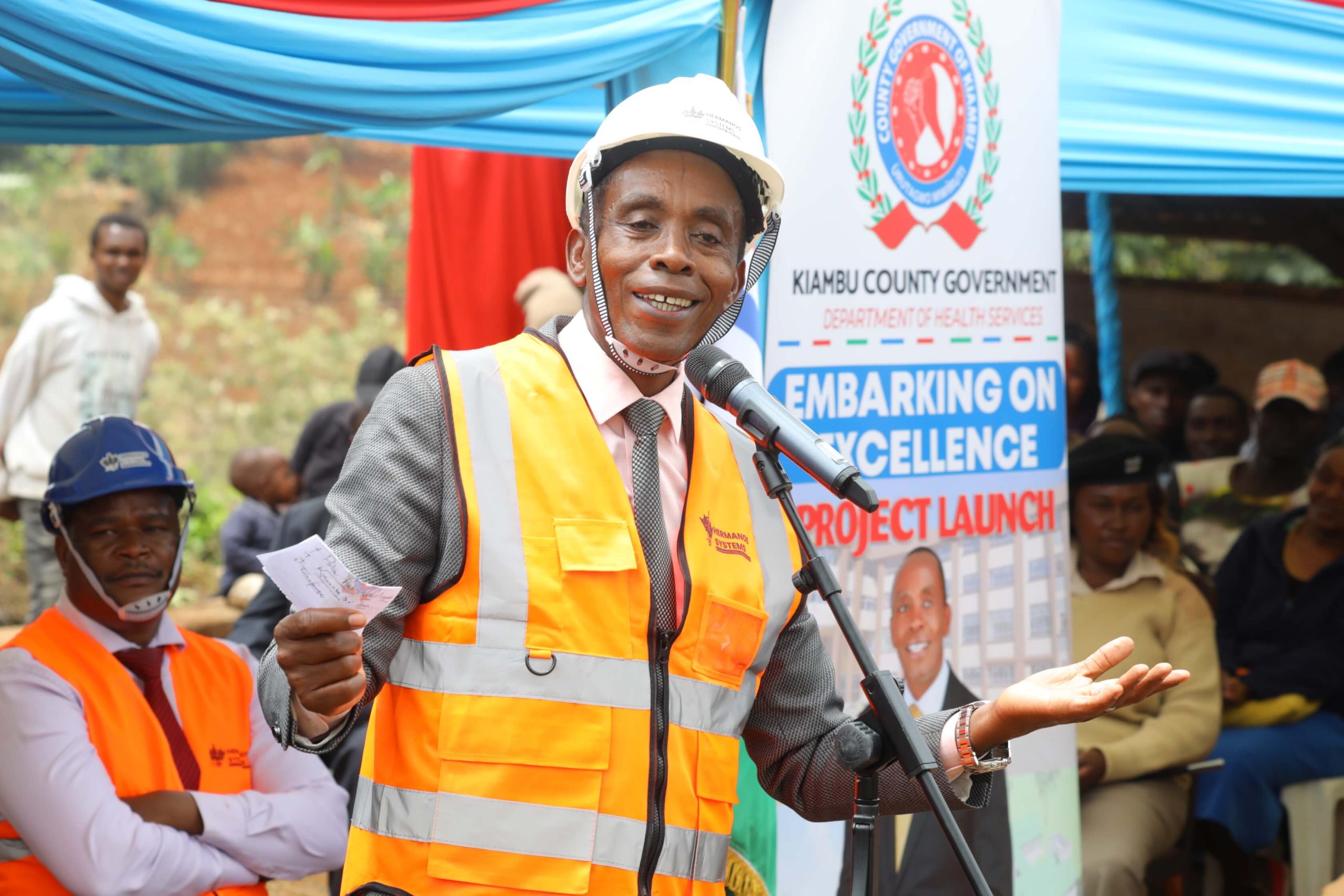
Juja has been the only sub-county in Kiambu without a level four hospital, forcing patients to seek services in either Gatundu, Thika, or Ruiru, and it will also get a 200-bed facility to meet the threshold of a level four facility.
Over Sh1.5 billion in health projects have been launched by the Kiambu County Government since Mr Wamatangi took office, including completing the stalled projects, constructing 13 new facilities, and undergoing renovations.
‘Projects have stalled some for more than ten years, and our facilities haven’t had a facelift from when they were built, not even one coat of paint; with the commitment of our governor, it is a new dawn in terms of infrastructure and service delivery ‘ Mr. Stephen Musyoka- Director Planning and administration Health Services.
As part of the regional government’s initiatives to boost access to healthcare and enhance service delivery, Mr. Wamatangi has begun constructing 13 new level three hospitals in different county wards for a total cost of Sh650 million, each costing Sh50 million.
The county chief estimates that the 13 new facilities will be finished and functional by the end of this year.
This will increase the number of health facilities in the county from 114 to 127.
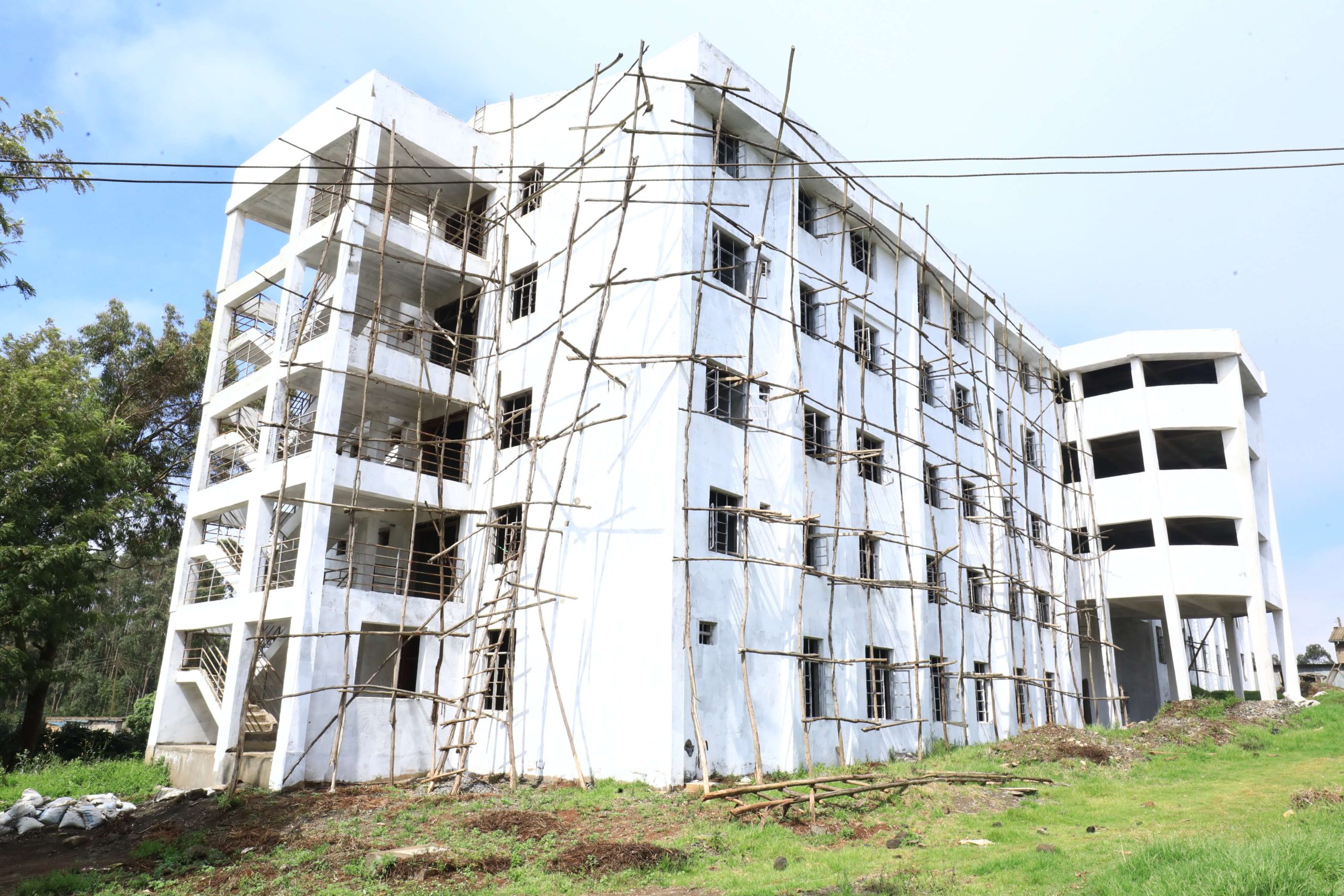
The governor has performed groundbreaking ceremonies to construct Kiamumbi Level Three Hospital in Kiambu Township Sub-County, Kahawa Sukari in Ruiru Sub-County, and Kawaida Level Three in Cianda Ward, Kiambaa Sub-County.
Ndumberi, Gitaru, Kahawa Wendani, Athena in Thika, Kawaida, and Mwihoko are the additional new level three hospitals in addition to Ndenderu, Gitothua, Kiawaroga in Limuru, Ndenderu, Gitaru, and Athena.
Infrastructure is crucial to emergency response in every area, including health: “As a County, we strive to provide access to all Kiambu residents, which is why we are establishing health facilities in every ward.” Dr. Patrick Nyaga, the county’s Chief Officer for health services, said.
The new facilities include an outpatient wing, a maternity wing with 16 beds, a ten-bed general ward, a small theatre, and a mini-laboratory.
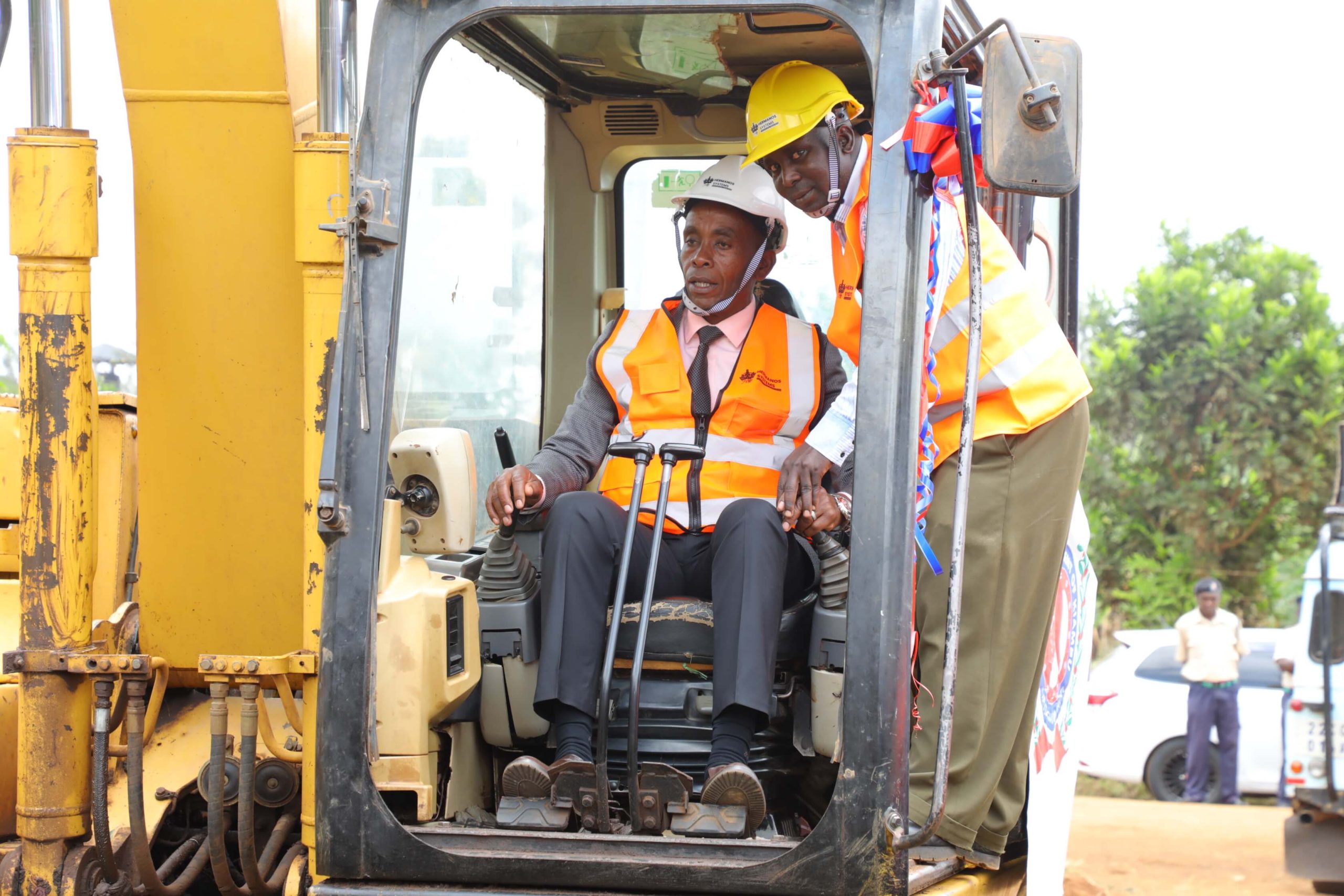
The governor promised that we would complete all of the projects by December, and they will all be open to the public, adding that the new hospitals will help address congestion, especially with the growing in-flow of patients from neighboring Nairobi, Machakos, Murang’a, and Nakuru county.
In addition, the county was finishing four level four hospitals, including Githunguri, Lari, Bibirioni in Limuru, Thogoto Kikuyu, and Wangige, which had been delayed for years because the previous administration needed to pay contractors.
However, the project resumed when Governor Wamatangi cleared money for the already-finished work.
The 200-bed wing of the Lari Level Four project, situated near Rukuma along the Nairobi-Nakuru Highway, is estimated to cost 192 million. However, unpaid bills put the project’s implementation off for years. However, new talks between the county and the contractor have led to the restart of construction.
Githunguri Level Four Hospital is another significant health project that the governor is working on completing and launching.
In 2018, First Lady Margaret Kenyatta commissioned the construction of this Sh800 million investment, a joint venture between the county and national governments.
The 280-bed facility’s infrastructure is almost finished, and according to the plans, it will have a multi-story modern facility with services like an intensive care unit, a modern outpatient clinic, a maternity ward, a mental health unit, as well as a cancer unit, accident and emergency unit, among others.
The county is already finalizing the infrastructure bit and also equipping it, saying he has already reached out to the Ministry of Health, which has agreed to supplement his efforts of procuring state-of-the-art equipment for the
facility.
The Department of Health, in an endeavor to improve healthcare services, has purchased assorted hospital equipment worth Ksh. 500 million.
The availability of cutting-edge technology, well-kept facilities, and qualified healthcare workers are frequently linked to the quality of healthcare services. Without suitable infrastructure, people may travel significantly to get medical services, delaying or even forgoing treatment,” Health Services CEMC Dr. Elias Maina said.
Further, renovations are being undertaken in the following health facilities: Thika and Kiambu Level Five hospitals, Kihara, Kigumo, Igegania, Tigoni, Nyathuna Level Four hospitals, as well as Kamae, Ngoliba, Kinale, Juja Farm, Makongeni, Rironi and Ngorongo dispensaries.
Additionally, Mr. Wamatangi has started creating a multi-billion hospital fund to finance the country’s healthcare operations exclusively.
The Facility Improvement Fund (FIF), funded by grants from the County Revenue Fund (CRF) and cash and insurance schemes from services provided in health facilities, has already reached Sh700 million from a negative figure in just one year.
The governor stated that he plans to increase the kitty to Sh1 billion by December of this year to ensure enough cash reserve is set aside expressly to run the health facilities efficiently. The meeting was held as part of the campaign to improve healthcare.
“The county FIF was continuously operating in the red because the health sector management would borrow money to put into the fund, then if the loan were paid off, they would borrow money again to maintain hospital operations. However, as soon as I took office, we decided to put actual, severe measures in place to ensure that every cent that came in was securely locked away. As a result, the FIF has gone from having a negative deficit to having a plus of Sh700 million, Wamatangi said.
The FIF purse is ideally intended to assist individual hospitals in managing their operations, including timely purchases of medications, equipment, renovations, and payment of temporary workers, among other operational costs where which health facilities are permitted to manage the funds they create.
The fund provides a consistent, dependable, and predictable source of income for health operations throughout the county by requiring all public hospitals to earn their revenue and use it solely to improve the quality of care at the institutions.
Governor Wamatangi’s ‘Kienyeji’ chicks program hatches prosperity
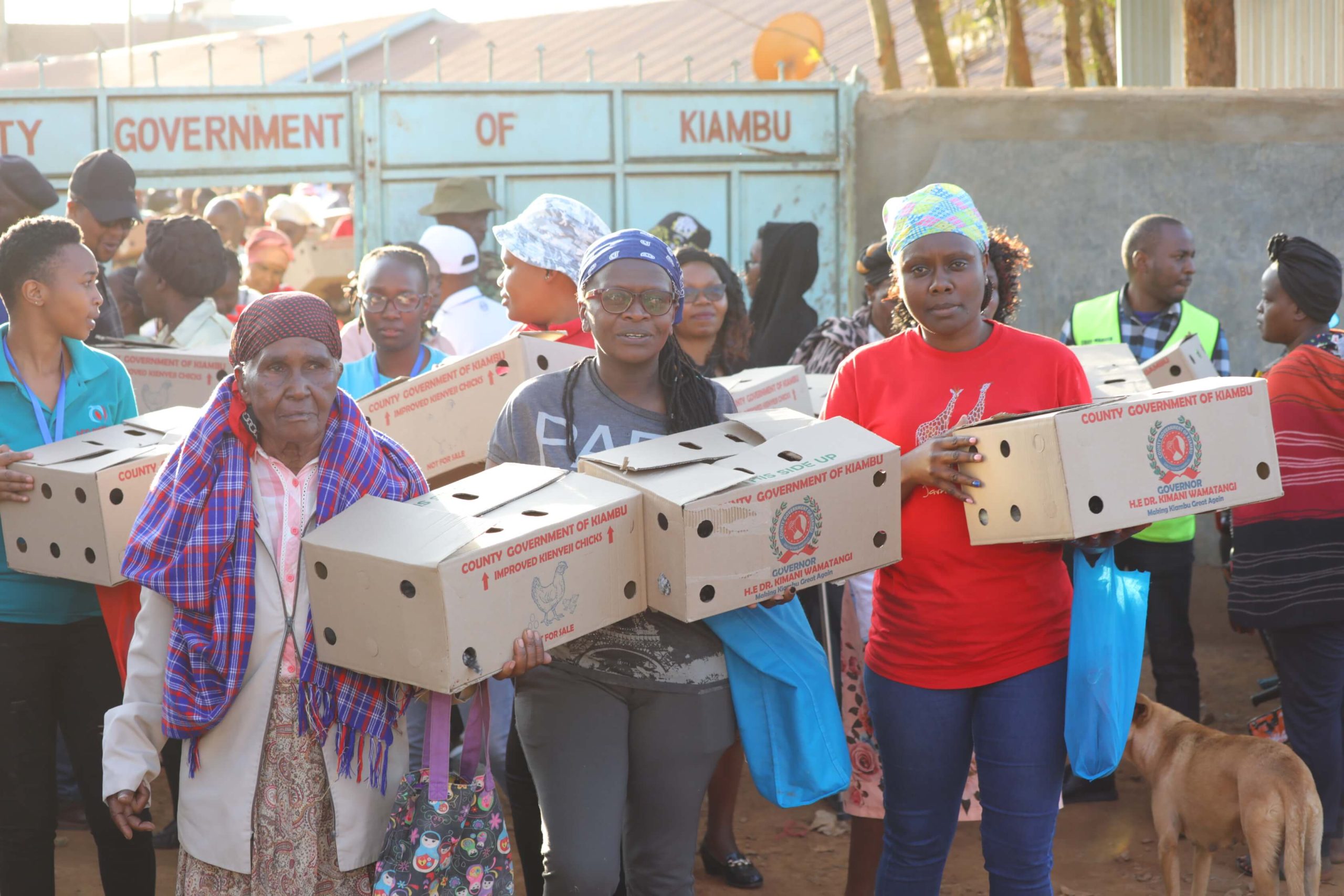
One aspect of the socio-economic empowerment program that has ignited great enthusiasm among the residents of Kiambu is the distribution of indigenous “Kienyeji” chicks to women across the County.
The comprehensive empowerment program serves as an exemplary model for rural development, simultaneously addressing the economic well-being of local farmers and ensuring that the County’s youngest residents have access to nutritious meals.
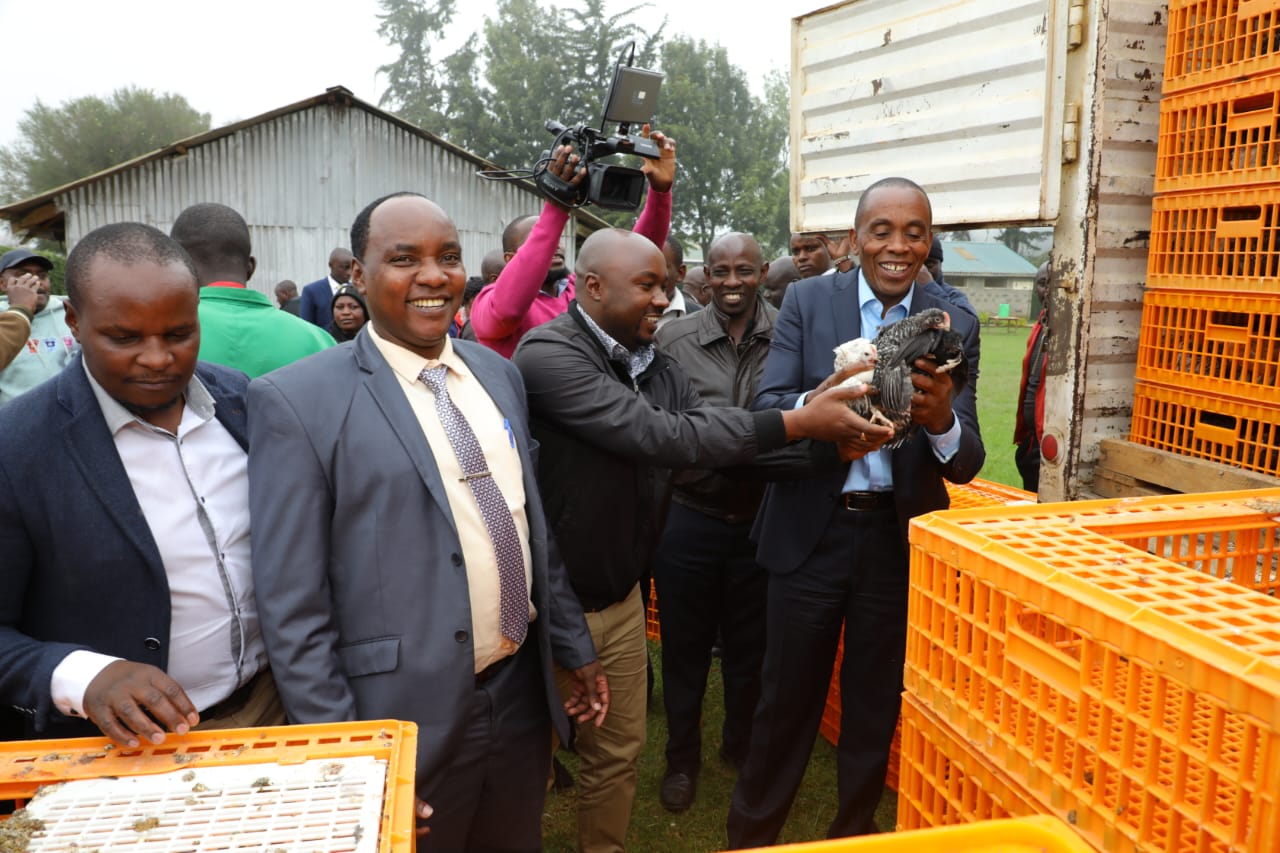
Since the launch of this programme by Governor Kimani Wamatangi in the mid this year, thousands of residents have received these chicks, which will soon transform them into entrepreneurs, enabling them to generate income from the venture.
According to Governor Wamatangi, the County also plans to expand the empowerment initiative to include the distribution of piglets to men, ensuring sustainable growth for the farming community.
This multifaceted program is designed to tackle both the economic challenges faced by local farmers and ensure vital nutrition for the more than 36,000 Early Childhood Development Education (ECDE) learners enrolled in the County’s 534 public ECDE centres.
The program, which began in June of this year, is operating in all 60 wards, and its success hinges on a two-pronged approach. Local farmers are being provided with one-month-old enhanced Kienyeji chicks to rear, offering them an opportunity to participate in egg production and contribute to the County’s school feeding program. To facilitate this, farmers are encouraged to form cooperative societies, enabling them to supply eggs in bulk to the county government collectively.
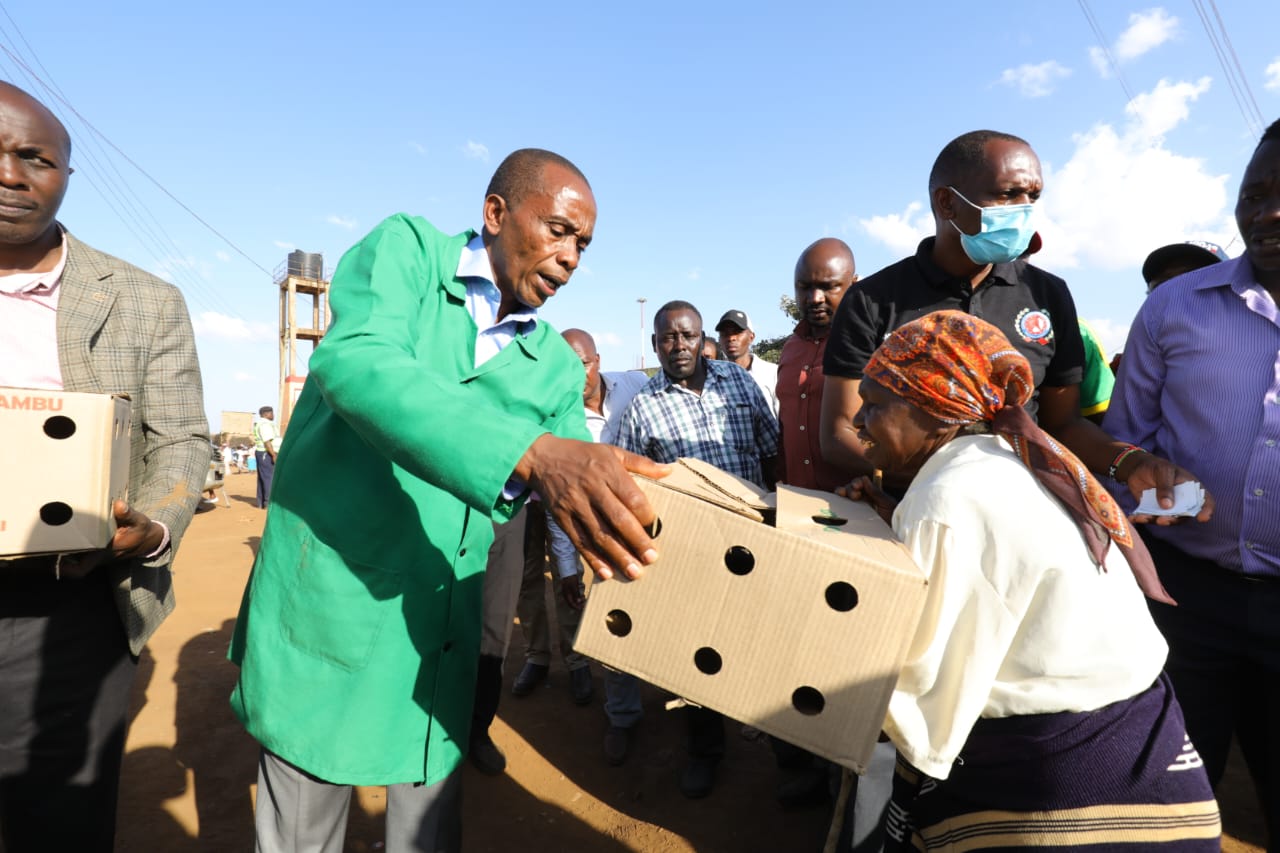
As part of the program, women in the County are being specifically trained to become leading suppliers of eggs, with the goal of both economic empowerment and ensuring a consistent source of nutritious food for young children. This program not only benefits local farmers but also tackles the issue of local egg supply, which has been a challenge for the County Government in recent times.
“I am excited that my dream of becoming a poultry farmer has materialised thanks to Governor Wamatangi. I expect that by December, my chicken will have started laying eggs to enable me to have a brood,” says Monica Wanjiku, one of the beneficiaries in Mwimuto in Kabete.
The County has approximately 36,000 ECDE children attending 534 public ECDE centres. Each child is provided with three eggs per week as part of their nutritious diet, amounting to 108,000 eggs per week.
Over a term of 13 weeks, the County requires a staggering 1,404,000 eggs, which costs Sh18 per egg, including delivery expenses. This equates to an income of Sh18,272,000 per term, benefiting the local farmers.
Speaking about the program, Governor Wamatangi stated: “Some people seem not to understand the reasoning behind our Kienyeji chicks distribution program. We are preparing these farmers to be our suppliers of eggs. Once the chicks have matured, laid eggs, and hatched, we expect the farmers not to have less than 40 chickens. These can lay up to 30 eggs per day and 140 per week. With the Sh18 that we are buying an egg, it means that per week, they will be earning Sh3,780. This is what we call economic empowerment.”
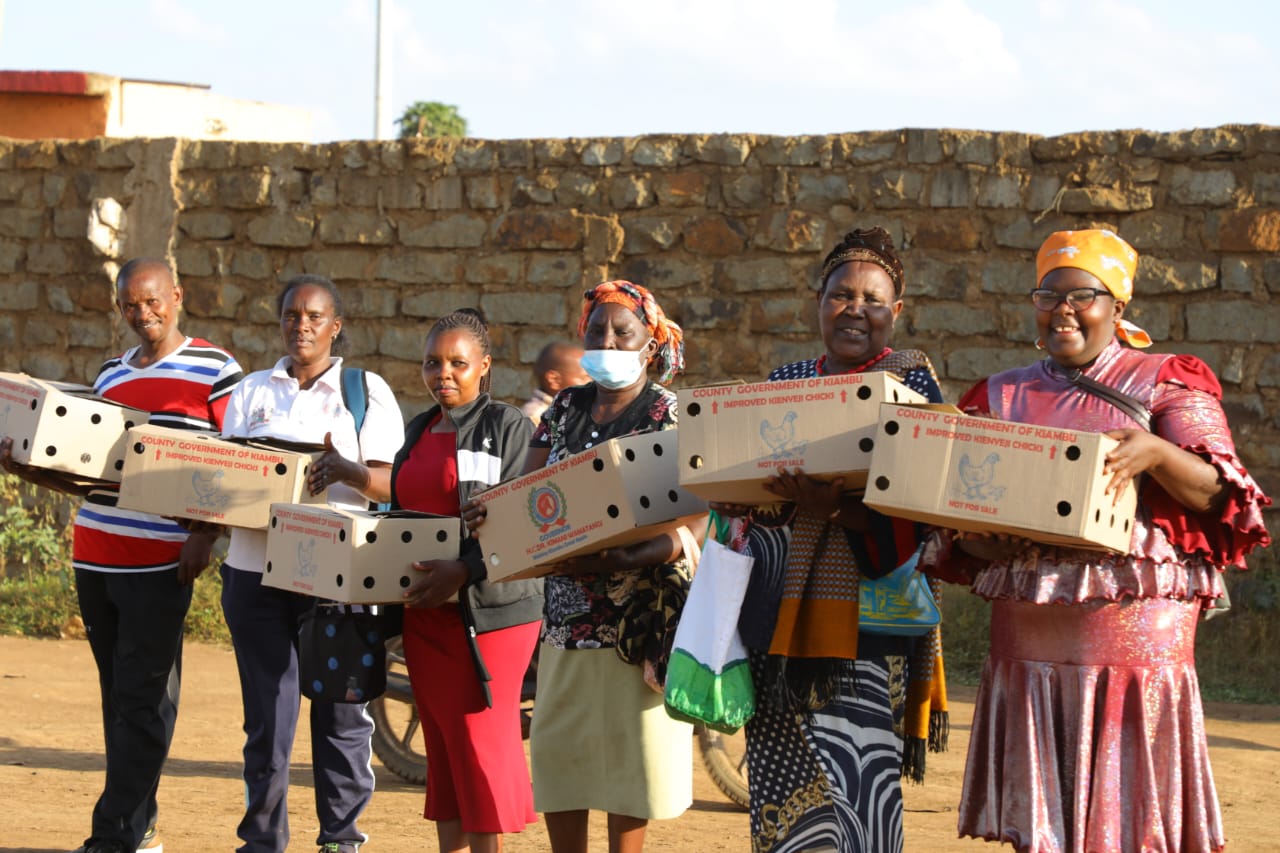
According to County Executive Committee Member (CECM) for Agriculture Mr. Wilfred Mwenda, one of the notable advantages of using improved Kienyeji chicks for this program is their cost-effective nature in terms of feeding, making it accessible and sustainable for local farmers.
To ensure accountability and proper documentation, the CECM says all beneficiaries of the chicken program are being registered upon receiving the chicks. This data will be subsequently used for registration within the cooperative framework.
“We are looking forward to having very vibrant and solid local cooperatives that will empower our people. It is just a matter of time before the fruits of this great initiative is seen,” says Mwenda.
In addition to the poultry initiative, The County Government has partnered with the National Government to establish an aggregation centre that will assist local farmers. The centre at Waruhiu in Githunguri, with a total investment of Sh500 million (Sh250 million from each government), is currently in the tendering stage. The centre will be pivotal for value addition to various farm produce, including avocados.
The Department of Agriculture has also put special emphasis on the lucrative Hass Avocado, which has the potential to transform the lives of Kiambu people.
As part of empowering farmers across Kiambu, the county government will be distributing 10 avocado trees to each farmer, further promoting agricultural growth and economic empowerment
Ruiru Central Medical Store Project Progress
Just next to Ruiru Level Four Hospital in Kiambu County stands a vast building resembling a warehouse.
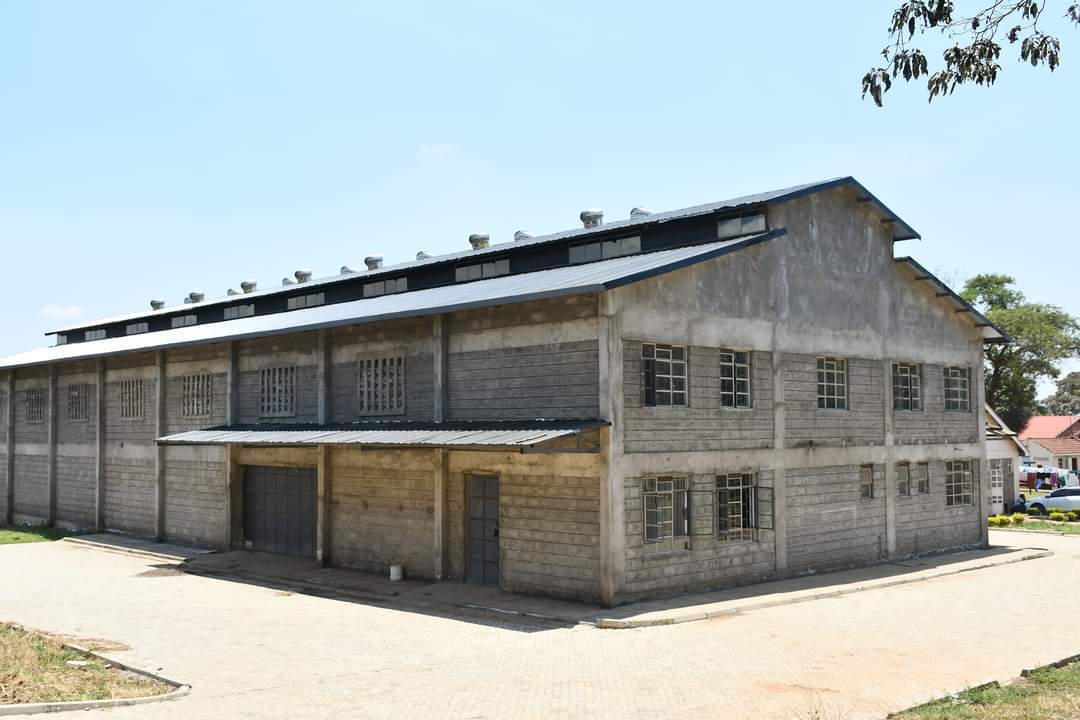
On-site laborers are completing its finishing touches.
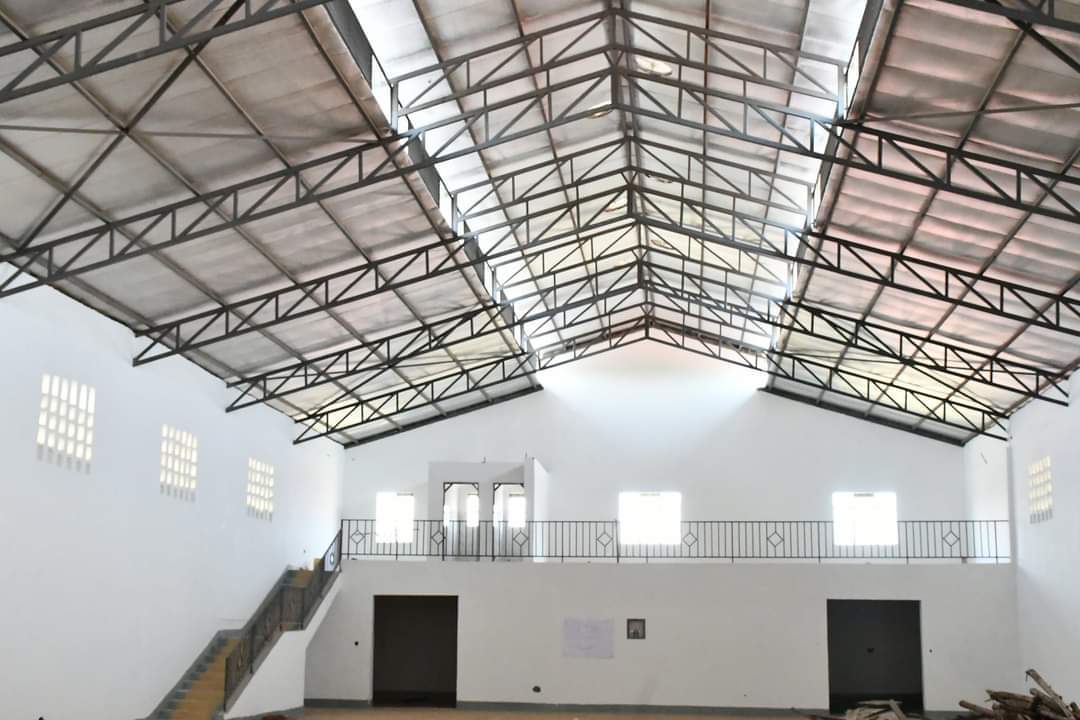
The County Government of Kiambu aims to use the building as a central medical facility where all of its supply orders for pharmaceuticals and non-pharmaceuticals will be housed before they are dispersed to all its 114 hospitals across the County.
Dr. Esther Kamau, the County Head of the Health Technologies and Products Unit, says the facility which is 95% complete will enable the County to refill pharmaceuticals in all facilities on time by eradicating delays caused by procurement bottlenecks.
This is because the County will be placing orders in advance and holding them at the facility and for restocking hospitals that run low on drugs.
“The Governor, H.E Dr. Kimani Wamatangi, has already ordered that the drug level in our medical facilities should never go below 85%. We have tried to keep this up, but this facility will be crucial in ensuring that we keep a drug level of 95% as, once it is finished and operational, we won’t be placing orders when our facilities are almost running out of stock. We will already have the orders for the commodities continuously distributed to the hospitals,” Dr Esther said.
Health Services County Executive Committee Dr. Elias Maina said the store will be connected to a Hospital Management System that will be linked to all facilities in the County for proper management and monitoring of the flow of drugs.
In the meantime, the governor has ordered that all medicine and non-pharmaceutical supplies be verified centrally before they are distributed to the various facilities within the County.
“This is to ensure that all requests are filled exactly as requested. Additionally, we have increased the amount of time we spend monitoring the supply at the facilities,” Dr Maina said.
The County established the Health Products and Technologies Unit (HPTU) with the Department of Health Services, with a mandate to coordinate and oversee all functions related to health products and technologies’ supplies and activities.
It was established to respond to the commodity security challenges experienced over the years, and it manages all the products under “one roof,” which will increase accountability and accessibility of stock movement with an end-to-end visibility mechanism in place to ensure increased efficiency in commodity management.
It handles pharmaceuticals, non-pharmaceuticals, nutraceuticals, vaccines & therapeutic antisera, medical equipment & devices, medical appliances & materials, health technologies, laboratory supplies & reagents, dental materials, hospital consumables, and any other material or equipment as may be necessary for the delivery of healthcare services in the County.
Pending bills: Kiambu sets new financial precedent
The County Government of Kiambu could enter into the books of history after Governor Kimani Wamatangi crossed to the 2023/2024 financial year without a pending bill for the previous financial year.
The county leader added that no unpaid bills for work completed or products and services were provided to the regional government during the 2022–2023 fiscal year.
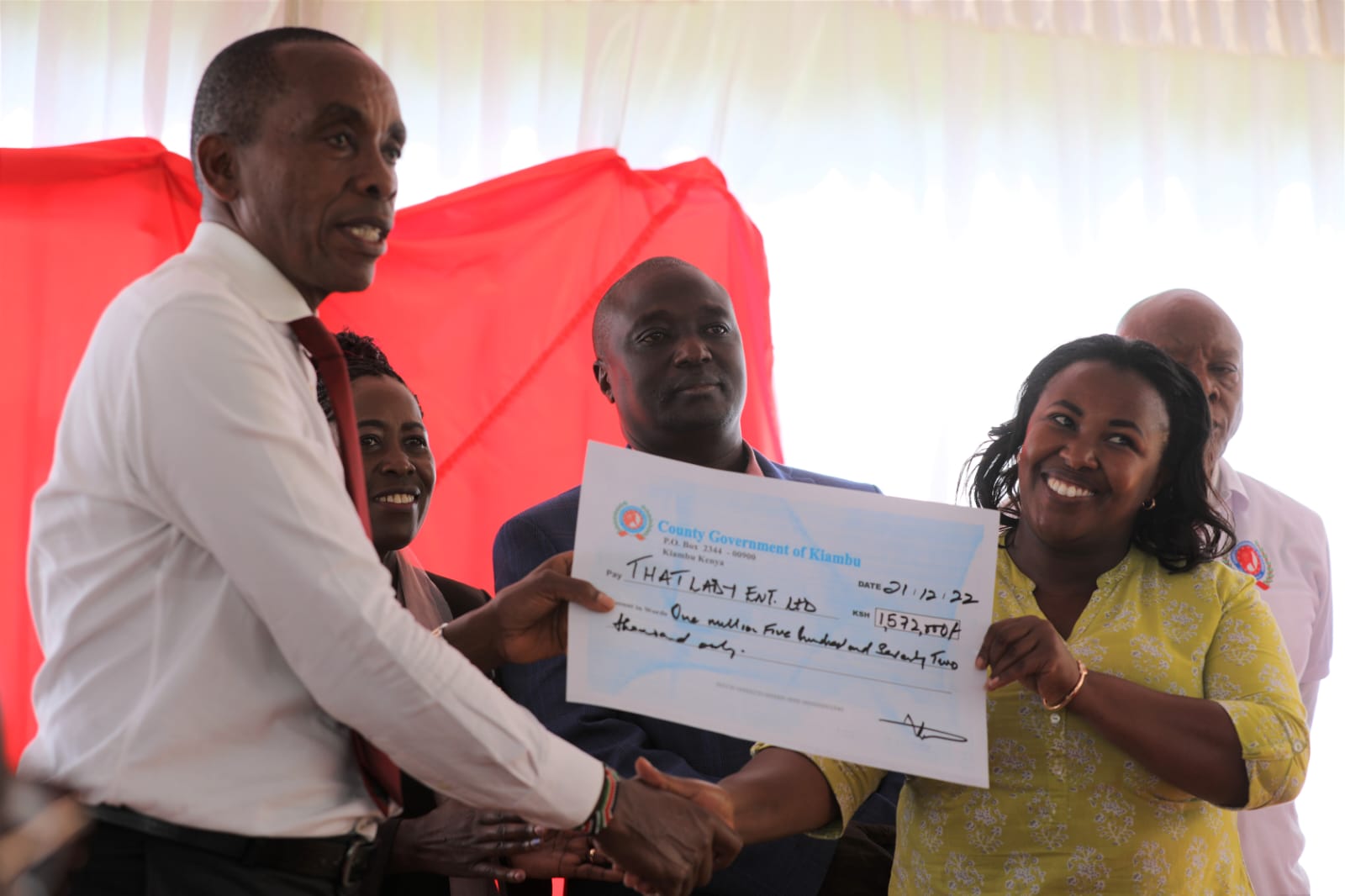
“Kiambu is the only county that transitioned to the 2023–2024 fiscal year without even one outstanding bill from the 2022–2023 fiscal year. I gave directives that departments should procure any goods and services or even advertise for a project, no matter how big or small it is, unless they have the money. We are running on a cash basis, “Mr Wamatangi said.
Mr Wamatangi also said he had paid over Sh2.4 billion as part of the pending bills he inherited from the previous administration, as he seeks to redeem the county’s reputation among contractors and suppliers who had gone to a level to stop doing business with it over nonpayment.
Wamatangi announced the creation of a mechanism to pay down the outstanding debt at a rate of Sh2 billion annually.
“I discovered bills totaling Sh7 billion, which I paid for with roughly 2 billion shillings, leaving us with Sh5 billion. I plan to clear it all since individuals invested their money believing they were assisting the county in fulfilling its purpose, but the receivers refused to pay,” the governor said.
According to a report by Auditor General Nancy Gathungu on Kiambu County’s County financial operations, the devolved government accumulated a pending bill of Sh2 billion from 2020 to 2021. This brought the total to Sh5.7 billion as of June 30, 2021.
“As disclosed, financial statements reflect a total pending bill of Sh5.7 billion as of June 30, 2021. The balance includes pending bills of Sh3.7 billion from the financial year 2019/2020 and earlier years. Failure to pay pending bills within the year affects the budget operations of the succeeding year and may attract interests and penalties,” reads part of the audit report now before the Senate.
The governor said he had instituted stringent measures to tame theft and wastage, including austerity measures that include suspension of county meetings in hotels, saying some county employees had even nicknamed a tent at the county headquarters “Naivasha” as the new venue for internal meetings by county staff.
With the tent, the county has done away with workshops in high-end hotels in Mombasa and Naivasha and international benchmarking trips where senior county officials have been blowing up millions in allowances and other logistic expenses.
The governor claimed he had implemented a new debt payment discipline that required departments to complete payments for all tenders within 14 days of delivery to prevent the regional government from further falling into bad debts that had harmed its relationships with its contractors and suppliers.
“People have been asking me where I’ve been getting the money I keep talking about. It’s straightforward: one plus one makes two, and one more makes three. When I get money, I spend it wisely, and over time, I’ve been able to save money and live debt-free. I can easily provide you Sh3 billion today if you want me to give you the cash deposit in our account,” he claimed.
To control wastage, the governor also mandated that all supplies be purchased at fair market value instead of the county’s previous practice of paying extravagant prices for goods and services.
The governor has ordered that lower prices be negotiated for projects with submitted bids at an inflated cost.
To ensure efficiency in the tendering and awarding process and prompt payment, the governor stated that he is working on a charter to direct the procurement process in his government per the procurement regulations and Public Finance Management Act,
“I’ve made it clear that I don’t want to hear about the horrible stories we hear in the procurement departments, where personnel demands bribes to award contracts to individuals or even to have payments completed on schedule.
Governor’s vision for ‘Leave No Child Behind’ in education gains momentum
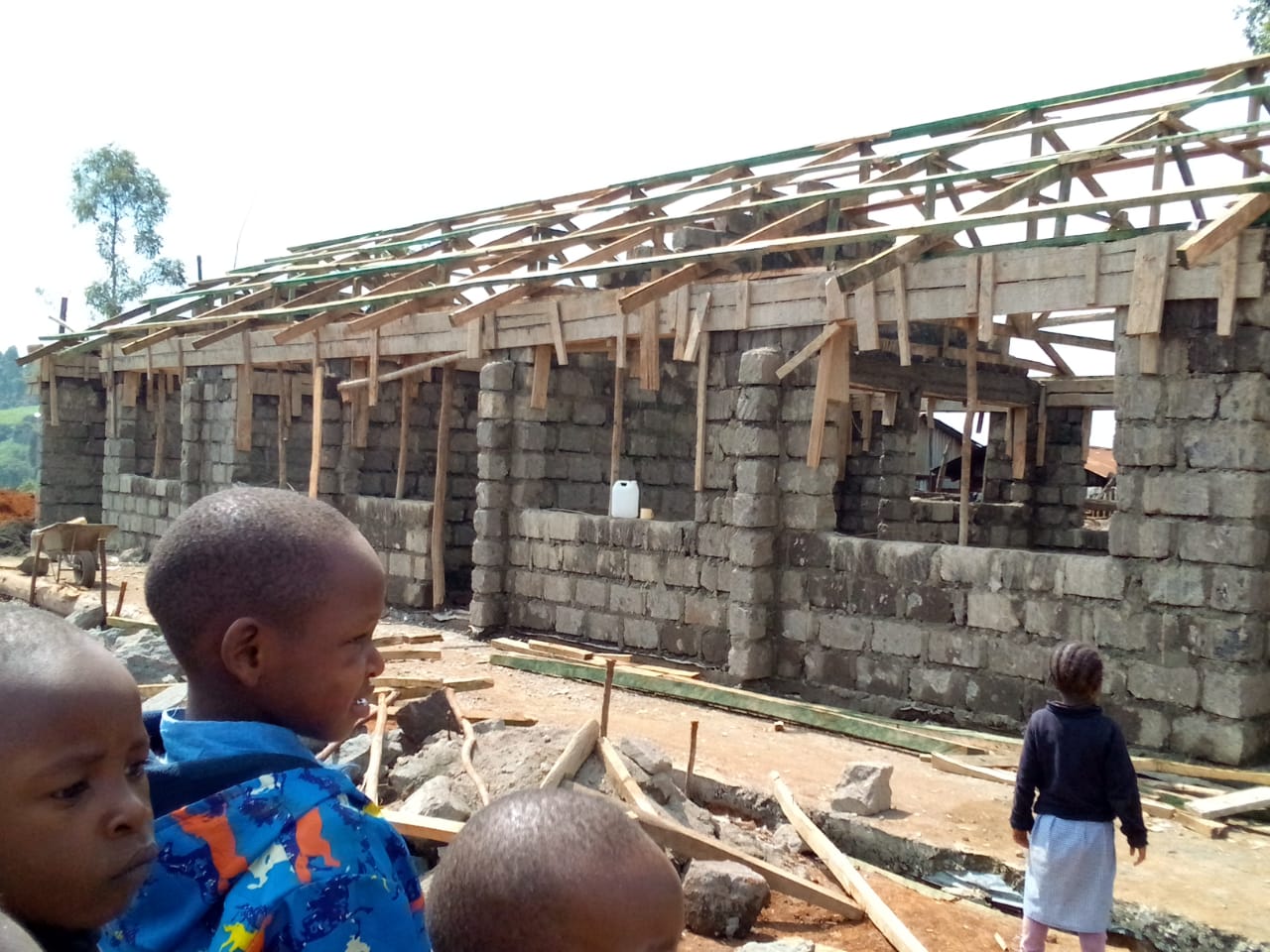
The phrase “education is the great equalizer” refers to the benefits and possibilities that education can offer people from all socioeconomic and social backgrounds. But this, often, has not been achieved because of the lack of a proper universal education program, forcing well-up families to opt for private institutions that have good facilities.
Kiambu Governor Kimani Wamatangi, under the auspices of his “leave no child behind” initiative, which strives to ensure quality education for all, has started a raft of programs to not only establish a strong foundation base for education but also guarantee support to the needy people.
From launching the modernizing all its 524 Early Childhood Development Centers (ECDE), beginning a feeding program for ECDE pupils, increasing the bursary fund from Sh100 million to Sh300 million in less than one year, to setting up Vocational Training Centers in all wards, Mr Wamatangi says he has set his sights on establishing a universal public education program to benefit people from all walks of life.
Mr Wamatangi’s game-changing initiative, which completely overhauls the infrastructure of all ECDEs in Kiambu and overhauls the structure of every school in the County, is currently bringing a significant makeover to the institution, with works almost finished.
He said 130 new model ECDE centers are already being built in the first phase of the program, with some of them 95 percent complete, noting that these centers will be operational at the start of the next term.
And they are not just the ordinary classes.
The model ECDE centers will have two classrooms with tiled floors and ceilings, an office, a toilet for children and staff, and a play area for all the 36 254 kids in county government-owned centres.
“First impressions are important because they shape a person’s attitude or behavior towards something. Imagine if the children’s first exposure to schooling is in the dreadful condition of public nursery schools; how do we expect them to love learning?” Mr Wamatangi posed.
He added: “Currently, we are constructing 130 Early Childhood Education Centers (ECDE) that will be identical and will be completed in December as the first phase of a comprehensive effort to guarantee that all 524 public nursery schools are modernized in the next three years.”.
Dilapidated shacks made of timbers or iron sheets, with earth floors, stand as haunting symbols of the dire condition that has plagued ECDEs in Kiambu.
For instance, the run-down timber structure with an earth floor that houses Mbariki Nursery School in Nyanduma Ward’s Lari Sub-County, ten years after Kenya underwent devolution, is a sad reminder of the terrible state that has befallen Kiambu County’s ECDEs.
Thirty young pupils, twelve in PP2 and eighteen in PP1 classes, struggle with their studies and the uncertainty of their future and well-being within these disintegrating, hole-filled wooden walls that are meant to be the basis and foundation of all the children’s lives. But the school is one of those that are almost complete.
Further, the County has launched a feeding program for all the ECDE centres by providing a stock of porridge flour and eggs, and arrangements have been established to allow the center’s administration to make the meals.
Porridge is offered daily, and eggs are also offered on Mondays, Wednesdays, and Fridays. And starting next term, the learners will get a packet of milk every Thursday.
The governor says the program aims to increase enrollment and keep kids in schools that most have been skipping due to a lack of food.
Ms Margaret Muthoni, the chief instructor at Mbariki ECDE centre, said for the two levels of ECDE, the number of pupils was consistently under 20 and that it had only recently begun to increase after the County Government of Kiambu introduced a feeding program.
The County has been issuing bursaries to needy students. Since 2013, the previous administrations have been giving out Sh100 million per year, but Mr Wamatangi, who says the County had huge needs, had tripped the figure to Sh300 million, which will benefit 72,000 students this academic year.
“For the next academic year, my administration will increase the amount to Sh500 million to ensure that all-day scholars receive full scholarships and that boarders receive at least Sh10 000 per term,” Mr Wamatangi said
How Governor Wamatangi is making Kiambu great again
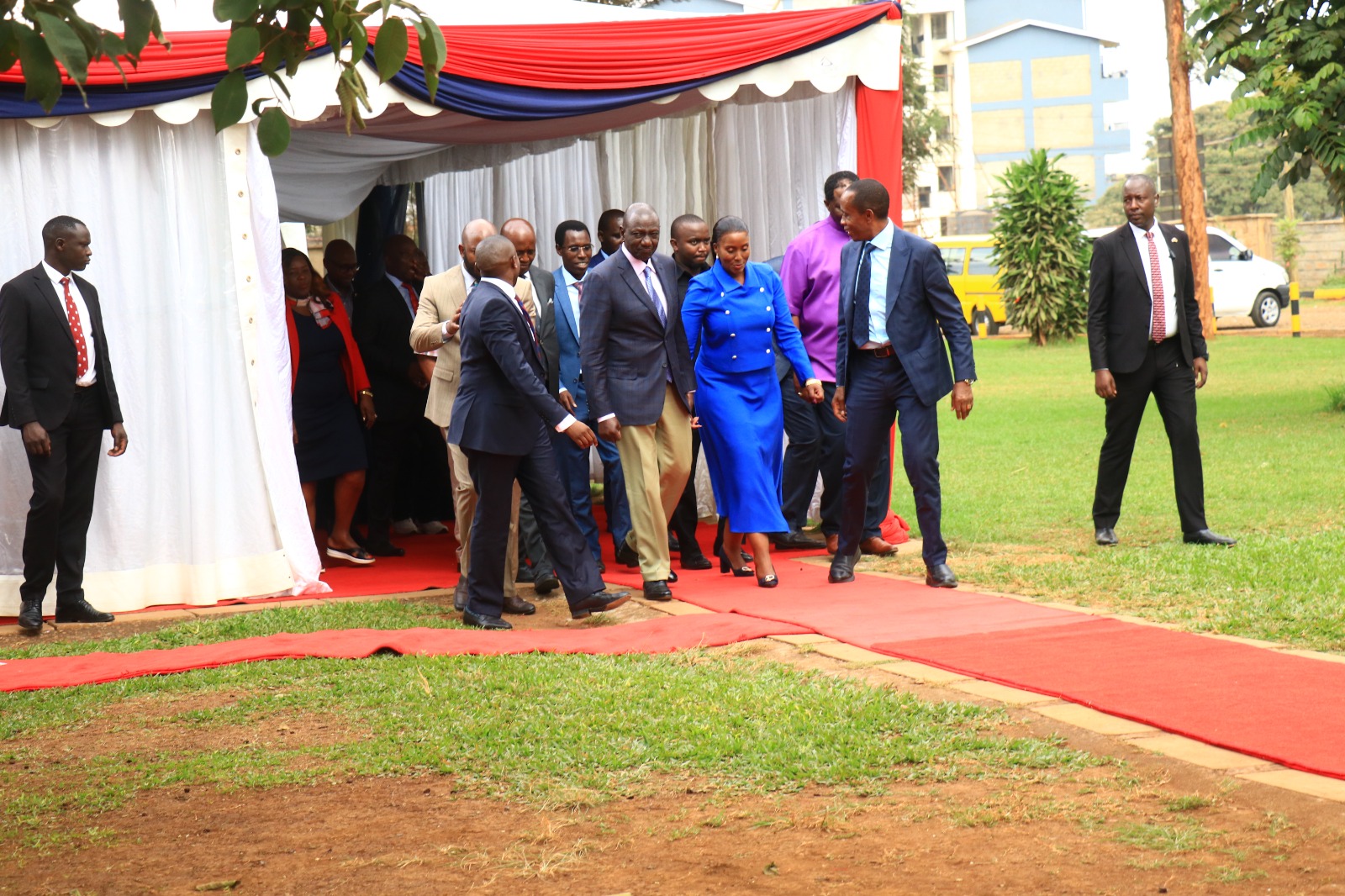
Soon after Governor Kimani Wamatangi assumed control of Kiambu County as the fourth county chief on August 27, 2022, he came under fire from some county authorities and a group of elected leaders for his decision to outlaw local and foreign seminars and benchmarking visits.
The Governor, who had been the county’s first senator for ten years, described the trips, common in regional governments, as a waste of public resources that, in his opinion, should have been used for development and service improvement, while the time officers spent on the trips would help run county affairs.
Wamatangi, renowned for his steadfast stance on prudent resource management, issued an order to all county officers, including himself, mandating holding of workshops and seminars that previously quickly passed for sponsored events in expensive hotels at the tent as part of austerity measures.
“Officers used to spend up to ten million shillings on per diem and other expenses when they flew to Mombasa and Naivasha for a week to prepare a Sh10 million project. Officers and their aides would travel to Naivasha thrice a month, twice in Kisumu and Mombasa, for workshops, some that were very unnecessary. Officers would never even travel, yet they would still sign the per diem,” the Governor said.
He added: “Sometimes, they even organized one or two trips abroad for benchmarking. Ultimately, the county would spend about a billion shilling on travel alone. That is why Kiambu was unable to carry out actual development.
But one of his radical measures that initially rattled the county management team, the Governor, who claimed that he inherited a county that “would have been auctioned due to bad debts,” erected a tent in the middle of the lawn compound at the county headquarters in Kiambu Town, which serves as a workshop and seminar venue for all meetings and workshops.
The county staff subsequently gave the tent the moniker “Vasha,” the short form for Naivasha, since whenever they schedule a meeting, even one that would last three days, they joke that it will take place at the Naivasha tent, which has a concrete floor and a red carpet and is capable of hosting over 100 people. The Governor also holds his meetings with the management team and other guests.
Departments must make reservations in advance, and the county’s catering section supplies meals for attendees.
“The tent brought us both good and bad exposure. But in the end, it has been helpful because it allows us to plan our activities quickly and inexpensively. We are happy with our Naivasha, he declared.
According to the Office of the Controller of Budget’s report on the county’s financial performance in the 2022-2023 financial year, the county executive wing of the County Government had a drastically reduced expenditure on international visits compared to other counties and compared to the previous year when the country was grappling with Covid-19 that had slowed foreign trips.
According to the report, the County Executive spent Sh1.06 million during the year under review on overseas travel, which CoB says was incurred between June 3, 2022, and June 29, 2022, while previous governor James Nyoro still led the county.
A team from the county traveled to Singapore for a “managing public-private partnership and alliance conference.”
“During the period, expenditure on domestic travel amounted to Kshs.321.69 million and comprised Kshs.220.0 million spent by the County Assembly and Kshs—101.69 million by the County Executive. Expenditure on foreign travel amounted to Kshs.81.11 million and comprised Kshs.80.04 million by the County Assembly and Kshs. 1.06 million by the County Executive,” reads the report in part.
Controller of Budget Margaret Nyakang’o has raised concerns over the counties’ expenditures on domestic and foreign travel across the counties, some up to Sh1.14 billion for Turkana County, Migori (Sh894 million), Bungoma (Sh696) million), while Tana River and Nairobi spent Sh532 million and Sh529 million on domestic travel.
To achieve what he says is making up for “lost time,” arguing that the county has wasted the last ten years, Governor Wamatangi arrives in the office around 5:15 a.m.
Unlike in other government offices where officials arrive past 8 a.m. to hang their coats and leave, here, all top county officials must attend a daily management meeting in the Governor’s office from 6:30 a.m. to 8:30 a.m. for planning and to discuss his government’s agenda as per his manifesto, and the people’s priorities
“This has been my daily routine since I took over this job. Kiambu has wasted ten years of devolution, and we have much to do to cover for the lost time, so we have come early. I clear my files every morning, and our meeting starts between 6 a.m. and 6:30 a.m. from Monday to Friday,” Wamatangi says.
The meeting entails each department presenting respective work plans, action points, and timelines and reporting on the progress of the ongoing projects and programs presented earlier, with the CECMs or chief officer required to make PowerPoint presentations on a large screen mounted on the wall.
The Governor also gives input, including making adjustments, corrections, and guidance to ensure precision.
Wamatangi says his style makes running the county a collective responsibility, boosts transparency and accountability since all departmental heads lay bare their plans to all, and enhances effectiveness and efficiency.
Dr. Margaret Ruinge, the CECM for public administration, said the meetings have been essential for monitoring the progress of county projects because, sometimes, departments must present on particular projects every day.
She also says that the meetings are necessary to ensure shared accountability among the leadership in managing the county.
The County Chief says he doesn’t regret at all, saying his modus operandi, which the county management team has become accustomed to now, has yielded a lot in terms of service delivery, saying all departments now have projects to show.
‘Kiambu Afya’ health plan touches 300,000 lives in the County
About 300,000 residents of Kiambu have benefited from a comprehensive health plan rolled out by H.E Dr Kimani Wamatangi.
The initiative, dubbed “Kiambu Afya,” would see beneficiaries enjoy enhanced medical coverage funded by the County Government and implemented by the National Hospital Insurance Fund (NHIF). During the program launch at Kirigiti Stadium in Kiambu Town, hundreds of enthusiastic residents celebrated the new scheme that promises to unburden families from the heavy weight of healthcare costs.
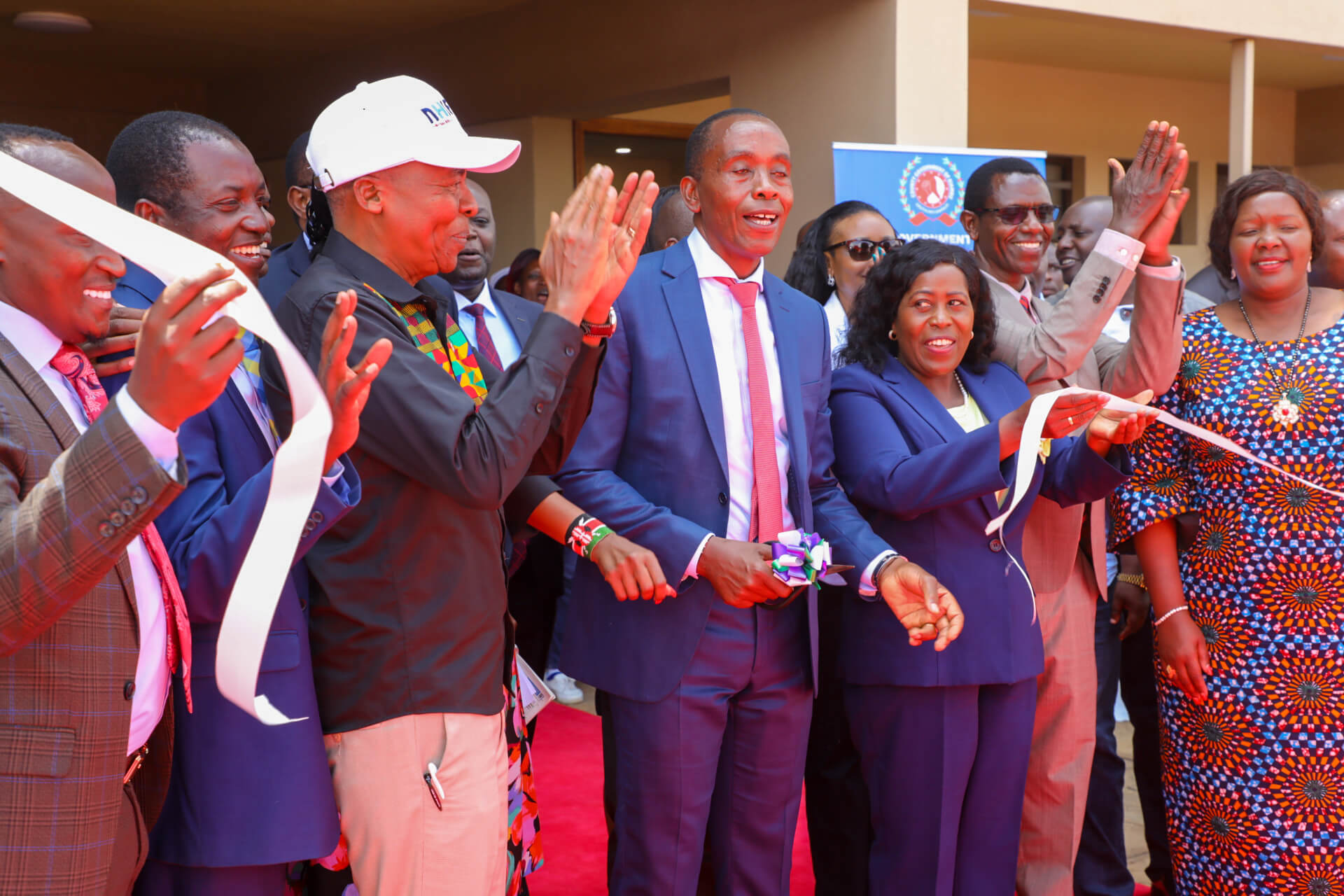
The event was graced by NHIF Chairman Engineer Michael Kamau, Kiambu Woman Representative Anne Wamuratha, MPs Simon King’ara (Ruiru) and Njoroge Kururia (Gatundu North), members of the County Assembly, among other guests.
In his address, Governor Wamatangi expressed his delight at fulfilling one of the crucial pledges of his gubernatorial campaign- the provision of quality and accessible healthcare for all. “The launch of “Kiambu Afya” represents a remarkable achievement in Kiambu County’s journey towards ensuring that every resident can access high-quality healthcare, regardless of their financial status,” said the Governor.
The program, which commenced with the Universal Healthcare mass NHIF registration last December, has registered 70,600 households, encompassing over 300,000 beneficiaries. Kiambu County Government will pay NHIF premiums for all the registered households.
Governor Wamatangi announced the immediate commencement of a second registration phase targeting over 500,000 people by enrolling over 100,000 households by the year’s close.

Key features of the “Kiambu Afya” program include access to inpatient services at government-accredited hospitals across the country and enhanced outpatient care at County facilities.
Additionally, beneficiaries will receive more comprehensive coverage, including treatment of chronic diseases like hypertension and diabetes.
The Last Expense Cover, offering Kshs. 100,000 to families to cover funeral expenses, underscores the County’s commitment to supporting needy residents.
“The County’s ambulances have been refurbished and equipped to enhance service delivery, with plans to acquire six new ambulances to ensure prompt healthcare response,” the Governor noted.
The Governor issued appointment letters and kits to Community Health Promoters (CHPs), who will play a pivotal role in grassroots healthcare.
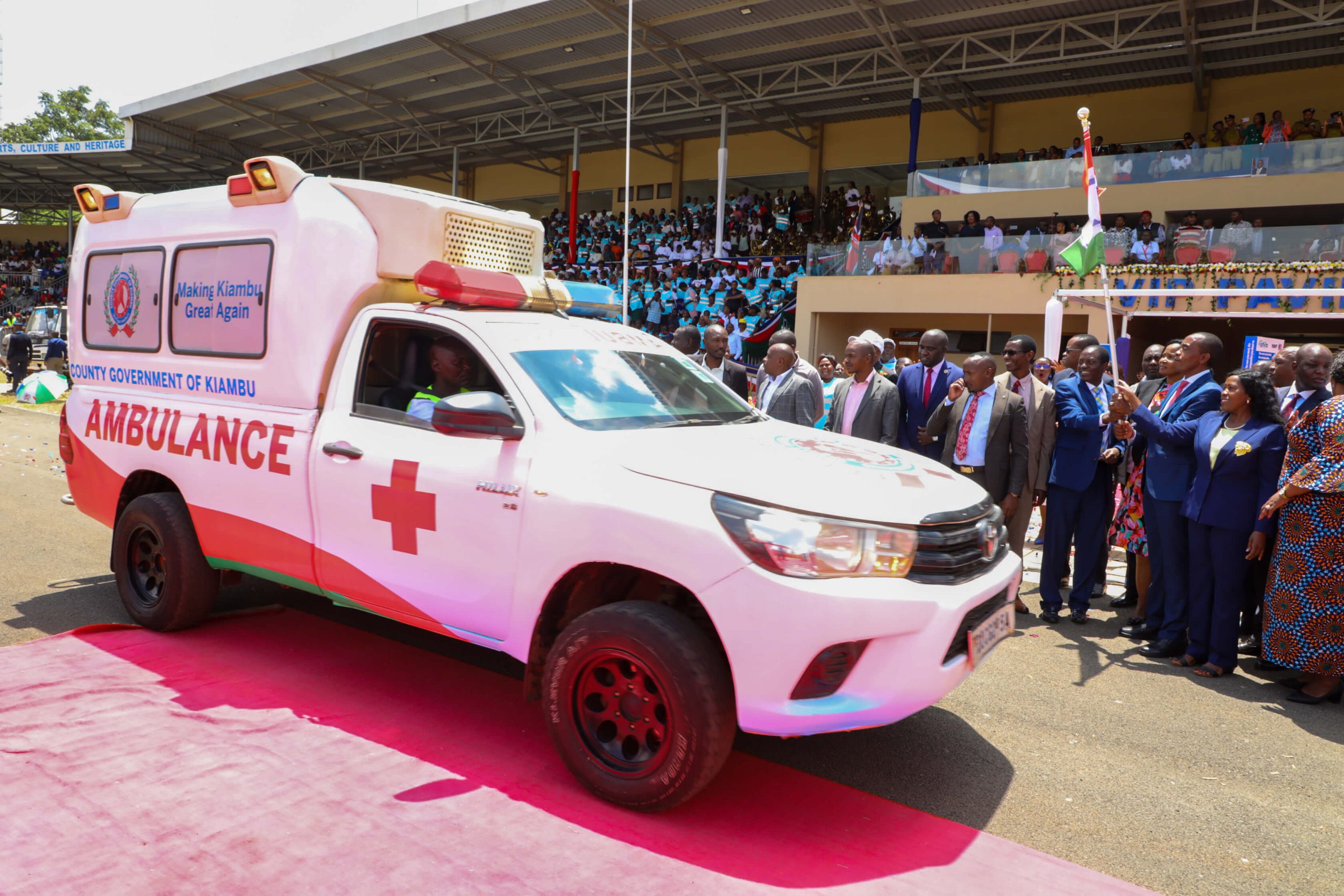
Governor Wamatangi noted that efforts to improve healthcare infrastructure in the County are underway, with the construction of 13 new level 3 hospitals and upgrading existing facilities ongoing.
“The County is also embracing modern technology by implementing a Health Management System to streamline operations, ensure efficient workflow, and reduce drug shortages. The digitisation initiative includes the provision of 1,000 computers to all 123 health facilities,” said the Governor. Stalled projects have resumed in Tigoni, Bibirioni, Wangige, Lari, and Thogoto hospitals, Wamatangi said. Engineer Kamau praised the initiative by Kiambu County as a significant stride towards making healthcare more affordable and accessible.
Kamau urged other counties to follow in Kiambu’s footsteps, acknowledging the potential nationwide improvement in healthcare accessibility and affordability.
“This is a great day for Kiambu, and if other counties were to follow suit, our nation would make incredible progress in safeguarding the health of its population,” he declared.
Beneficiaries of the medical care expressed delight at being relieved of the hospital expenses. Antony Muiruri, a resident of Kiawaroga Village in Limuru East, was elated that he had been enrolled in the program, saying it was a turning point in his life.
“Health care has become very expensive in recent times. We have struggled when our family members get sick, but with this initiative by Governor Wamatangi, I am happy all my family members are now taken care of,” said Muiruri.
He called on the County Government to ensure that the program is sustained.
“We hope this will not be like other programs in the previous regimes that were started only to die after a few months,” said the resident.
County Gearing up to the Proposed Thika Industrial Smart City
President William Ruto being explained by Kiambu Governor Kimani Wamatangi during the official opening of the 8th Annual Devolution Conference at Eldoret Sports Club in Uasin Gishu County, on August 16, 2023 about a model of the proposed Thika Industrial Smart City with the County Government of Kiambu spearheading.

The proposed Thika Industrial Smart City encompasses manufacturing, Economic Processing Zone,affordable housing, technology and transport infrastructure which the county is partnering with the national government and private sector to put in place the facilities which are expected to create 50, 000 jobs.

Kiambu revamps bus parks to boost public transport
The continuing renovations at Makongeni Bus Park in Kamenu, Thika, today. The 10,000 square metre BusPark serves Kitui, Matuu, and Thika town, among other places.

Similar projects are underway in Kiambu and Kikuyu townships. This month will also see the start of works in O.J. in Ruiru, Kwa Maiko in Ngewa Ward, Githunguri Town, and Karuri Bus Park in Banana Township.

The scope of work includes excavation, graveling, hardcore laying, compaction, and cabro stones laying.
They also include solarizing existing flood lighting, building public restrooms, contemporary kiosks (which will be given to the existing traders free of charge), and designated trash areas.
Na pia, hizi projects zinapea vijanaa jobs
#MakingKiambuGreatAgain
Ruiru Central Medical Store Project nears finish line at 85 percent completion
The Ruiru Central Medical Store project is presently almost 85% complete.
Most of this medical center’s structural work and infrastructure have been completed, and it is now in the final stages.

When finished, it will act as a crucial central hub for the storage and distribution of medical supplies, greatly enhancing the County’s healthcare access and effectiveness.

The County is also setting up a Health Management System that is connected to all 114 facilities in the County for proper management and effective monitoring of service delivery, including, among other things, improving turnaround times and ensuring that each facility is adequately supplied so that, if stocks run low, the system will be able to notify for replenishing.
#MakingKiambuGreatAgain
Boosting rural infrastructure: Smooth progress in upgrade and rehabilitation of access roads
The County Government of Kiambu has devised a new framework for opening up rural and feeder access roads, which Governor Kimani Wamatangi says has reduced the cost of construction from Sh6 million to Sh400,000 each and enhanced efficiency.

Mr Wamatangi said since he came into office, the regional government has assembled road construction units comprises of dozens of county-owned graders, roller compactors, trucks, water bowsers, and excavators which have been opening up new roads and undertaking routine maintenance on feeder roads at a significantly reduced cost.
The excavators have been stockpiling murram and other road construction materials from quarries owned by the county, which Wamatangi said has reduced the cost of the graveling material to only fueling the excavators and ferrying trucks.
This, Wamatangi said has also enhanced efficiency, saying the County Executive Committee Member in the Department of Roads, Transport, Public Works and Utilities Mburu Kangethe, his Chief Officer Edmound Njihia and director Joseph Kamau, are fully in charge of the projects, including monitoring and evaluating the workmanship.

“A 3km road project that was costing 6 million is now costing Sh400, 000. Previously, the works would be allocated to contractors and the excess funds would be shared among some county officials, leaders, and brokers. That’s why there is an outcry from the disgruntled cartels and their minders who thought I would allow the pattern to continue,” he said yesterday.
Mr Wamatangi said, that since he took office in August last year, the Department of Roads, Transport, Public Works and Utilities has opened up and rehabilitated over 700 rural access roads in 40 out of the 60 wards at a rate of four wards per week.
“So far, we have graded over 700 rural access roads in various wards, and excavation of murrum in public quarries has kicked off in public quarries in Juja, Ruiru, Kabete, Ngoliba and Thika and Limuru sub-counties. We are also souring for other sites in Githunguri, Lari, and Kikuyu. I intend to make all the areas accessible by the next of the year before moving to the next phase of tarmacking. I have an elaborate plan to source funding for that,” Wamatangi said.

The governor however said the road works are being hampered by the ongoing heavy rains, but any day the rains subsidize works resume in the wards and pleaded for understanding and patience from the members of the public.
Initially, the county has been floating tenders for the rehabilitation of rural access roads, some of which have been costing up to Sh6 million each, with over 500 percent of the money reportedly going to brokers and unscrupulous officials who demand hefty kickbacks.
Corruption, the governor said, has been thriving in the previous framework, saying the roads department may have paid over Sh900 million for road rehabilitation and maintenance works during the previous regime, while a senior officer has admitted the genuine contracts only totaled Sh175 million for the total works.

“That could have been a Sh800 million loss in one year by a single department. But what we have adopted has eliminated brokers and other dealers because all we have to do is deploy our equipment operated by our staff. The extra cost we are incurring is for just fueling and just the necessary allowances” said Wamatangi.
Kangethe said the county is working on assembling road construction units in each of the 12 sub-counties.
With such an arrangement, we will have work continue in all the wards throughout the year. It will enhance service delivery,” he said.
Kiambu achieves record revenue collection of Kshs. 3.6 billion in fiscal year ending June 2023
The county government of Kiambu collected approximately Sh3.6 billion in its own source revenue in the last financial year ending June 30, 2023, placing the county among the top performers in revenue collection.
According to the county’s Department of Revenue report, the collection is Sh485 million more compared to Sh3.1 billion in the previous year.
Although the collection reflects a 72 percent performance level of the Sh5 billion set target and is the greatest ever for the county, Governor Kimani Wamatangi said it is still inadequate given the capacity of 13 billion.
For the 2023–2024 fiscal year, he already established a target of Sh7.9 billion and a budget of Sh22 billion every year..
“Even if there was an improvement throughout the period, this is hardly a number we can applaud given that it was election season and there were transitional impacts. Over Sh5 billion was collected, however, due to dishonest personnel and system manipulation, about 30% was lost. Several other individuals who never paid us have told our citizens that we will reach the Sh7.9 billion goal without raising current fees and levies. The capacity for government-surveyed collection is Sh13.9 billion, according to Mr. Wamatangi.
The administration’s leadership, in its bid to boost revenue, is banking on a new enterprise resource system (ERP) currently under installation, which is a holistic system that covers the management of finances in all sectors such as hospital management, building approvals, business permits, and other revenue charges, as well as exploring more revenue streams.
Approximately Sh2.5 billion was collected in the last two quarters of the financial year (January to June when the county surpassed set targets in some months.
Sh1.31 billion was collected in January, February, and March against a set target of Sh1.25 billion, meaning the county hit the mark by about Sh100 million.
Sh1.51 billion was collected in April, May and June.
In July, August, and September, Sh534 million was realized against a target of Sh1.25 billion, while in October, November, and December, when Mr. Wamatangi was grappling with transition intrigues, Sh585 million was raised.
From physical planning, Sh476 million was realized compared to Sh364 million in the previous year (16 percent increase),
The governor was forced to terminate the Electronic Development Application System (EDAMs) due to concerns that developers were submitting applications but would become frustrated due to the system’s frequent outages as a result of the low performance, which has been attributed to the lack of a reliable system that ensures efficiency in the building plans approval process. Some developers had remained for as long as three years without having their applications processed, and the governor claimed that corrupt officials would then demand bribes to process them outside of the system, depriving the county of revenue in the county’s booming real estate market.
From National Health Insurance Fund (N rebates, Sh501 million was raised compared to Sh357 million in the other year (29 percent).
From land rates, Sh398 million was collected against Sh353 million in 2021/2022.
Vehicle parking revenue raised Sh308 million compared to Sh286 million the previous year, while single business permits raised Sh351 million compared to Sh249 million in 2021/2022 (29 percent increase).
However, the county boss said this was undervalued, saying the potential is Sh1 billion.
From the physical planning stream, Sh746 million was realized against an Sh1 billion target (69 percent) land rates (Sh398 million), while Sh23 million was collected from the county rental houses.
Sh661 million was realized as fees from the county’s 116 health facilities and Sh502 million from NHIF rebates. In contrast, in public health, Sh164 million was released, representing a performance level of 73, 84, and 96 percent performance, respectively.
According to the report, Thika Sub-County raised Sh468 million, which was a three percent increase; Ruiru raised Sh452 million, which was a decrease of 3 percent, making it the only area that dipped its performance, while Juja grew its performance level by 27 percent to give Sh369 million.
In Kiambu Township, Sh301 million was realized compared to Sh239 million in the previous year, representing a performance level of 21 percent.
From Kikuyu, Sh195 million was realized compared to Sh130 million in the previous year, representing a performance level of 33 percent, while Kiambaa raised its performance by 27 percent after collecting Sh115 million.
“There was a slight improvement in both departments and sub-counties, but we still didn’t achieve the set targets, which means much more work and strategies need to be put in place to ensure that the new targets are met,” Finance County Executive Committee member Ms. Nancy Kirumba said.
County government invests a whopping Kshs 1.5 Billion in health department
The Kiambu County Government has initiated health projects worth over Sh1.5 billion shillings, which, according to Governor Kimani Wamatangi, will see the county double its bed capacity from the current 1 608.
Mr Wamatangi has started building 13 new level three hospitals in various county wards at a total cost of Sh650 million, where each facility will cost Sh50 million, as part of the regional government’s initiatives to promote access to healthcare and improve service delivery.

While ground-breaking the construction of Kiamumbi Level Three Hospital in Kiambu Township Sub-County on Wednesday to mark the beginning of the 13 new facilities, the county chief said they will be completed and functional by the end of this year.
The new level three hospitals are Ndenderu, Gitothua, Kiawaroga in Limuru, Kiamumbi, Kawaida, Ndumberi, Gitaru, Kahawa Sukari, Kahawa Wendani, Athena in Thika, Kawaida, Mwihoko.
The new facilities, which, according to Governor Wamatangi, ensure that all wards in the county get at least one health facility, comprise an outpatient wing, a 26-bed maternity wing, a mini theatre, and a mini-laboratory.
“We have already secured the funds for all these projects we are doing. We have them in the bank. The projects will run concurrently to ensure by December, we will be opening all of them to serve the public,” the governor said.
“We are also setting up a Health Management System to connect all 114 facilities in the County for proper management and effective monitoring of service delivery, including, among other things, improving turnaround times and ensuring that each facility is adequately supplied so that, if stocks run low, the system will be able to notify for replenishing,” Wamatangi said.

Further, the county was completing four level four hospitals, namely Githunguri, Lari, Bibirioni in Limuru, Thogoto Kikuyu, and Wangige, which had been put on hold for years due to the previous administration’s failure to pay contractors at a cost of about Sh400 million.
Karuri Hospital in Kiambaa and Gachororo Level Three Hospital in Juja are also being upgraded to Level Three Hospitals, where each facility will get a 200-bed capacity block at a total cost of Sh420 million.
Yesterday, Waitangi commissioned the resumption of the construction of Thogoto Level Four Hospital, a state-of-the-art facility with 150 beds in Kikuyu Sub-County that was commissioned in 2016 The facility was meant to serve the area’s densely populated Kikuyu sub-county and parts of the nearby Ndeiya in Limuru, where patients had previously had to travel great distances to Kiambu, Tigoni, and Wangige hospitals.

However, due to a bad relationship between the contractor and county over the latter’s unwillingness by the previous administrations to pay outstanding bills, the construction of the building, which was supposed to be completed in just one year, was put on hold after the contractor abandoned the site.
Following the contractor’s abandonment, the project became a livestock grazing area in the messy property, with thieves stealing and vandalizing building supplies.
“Work has now resumed, and by December, we anticipate completion of the contract’s infrastructure work, allowing for immediate outfitting and operationalization,” Mr Wamatangi said.
The 150-bed Bibirioni Hospital, expected to cost around Sh300 million, was introduced in 2018 by former First Lady Margaret Kenyatta while Ferdinand Waititu was the Governor.
But after the contractor, Gokul Builders Limited, left the site due to unpaid invoices, the project—a multi-story building on a five-acre plot of land—is a far cry from the idealized vision intended to serve more than 100,000 people.

However, Governor Wamatangi cleared payments for the already performed work, and the project has now resumed.
The Lari Level Four project, situated at Rukuma along the Nairobi-Nakuru Highway, is expected to cost 192 million to create a 200-bed wing. However, the project’s execution was put off for years due to unpaid debts, but work has resumed following new negotiations between the county and the contractor.

Githunguri Level Four Hospital is another large-scale health project that the governor is working to complete and put into service. First Lady Margaret Kenyatta ordered this Sh800 million investment in 2018.
The 280-bed facility’s infrastructure is almost finished, and based on plans, it will have a multi-story modern facility with services like an intensive care unit, a modern outpatient clinic, a maternity ward, a mental health unit, and a cancer unit, casualty, and emergency unit among others.
Transforming Kiambu’s Early Childhood Education: New state of the art facilities set the stage for a revamped sector
A decade into devolution in Kenya, the grim sight of the dilapidated shack with an earth floor, which hosts Mbariki Nursery School in Nyanduma Ward’s Lari Sub-County, stands as a haunting symbol of the dire condition that has plagued Early Childhood Education Centres (ECDEs) in Kiambu County.

Within these crumbling wooden walls with gaping holes, supposed to serve as the bedrock and foundation of all the children’s lives, thirty young minds, 18 in PP1 and 12 in PP2 classes, grapple with their lessons and the uncertainty of their future and well-being.
Margaret Muthoni, the chief instructor of the facility, says that although pupils have been admitted to the facility—which serves as the model for what most of the 534 centers in the county look like—most leave after one term due to its sorry condition.
Muthoni said for the two levels of ECDE, the number of pupils was consistently under 20 and that it had only recently begun to increase after the County Government of Kiambu introduced a feeding program that provides pupils in the county with a daily bowl of uji and three boiled eggs each week.
“The school’s walls are collapsing, and the ground is a mess. The general state of hygiene has been poor. Therefore, whenever we admitted kids for PPI, their parents would transfer them in the second term, blaming the schools’ bad conditions,” Muthoni told the Standard.
However, the institution is currently getting a significant makeover as a result of Kiambu Governor Kimani Wamatangi’s game-changing effort, which not only wholly overhauls the infrastructure of all ECDEs in Kiambu but also overhauls the structure of all of the schools in the county.

The model ECDE centers will have two classrooms with tiled floors and ceilings, an office, a bathroom for students and staff, and a play area for all the 36 254 kids in county government-owned ECDE centres.
“First impressions are important because they shape a person’s attitude or behavior towards something. Imagine if the children’s first exposure to schooling is in the dreadful condition of public nursery schools; how do we expect them to love learning?” Mr Wamatangi said.
He added: “Currently, we are constructing 130 Early Childhood Education Centers (ECDE) that will be identical and will be completed in December as the first phase of a comprehensive effort to guarantee that all 524 public nursery schools are modernized in the next three years.”
At Kasarini Primary School in Thindugua, which is in Kiambu Township Ward, labourers are busy plastering the walls of the school’s upcoming new ECDE centre, launched last month by the county government.
According to the foreman, Isaac Irungu, he hopes that the facility, which will see the pupils move from the current congested classroom, will be complete for occupation within the next month.

On Wednesday this week, when we took a tour of the school; we encountered the students around break time when each received a cup of porridge and a boiled egg. According to the center’s instructor, Damaris Wanjiru, the Kiambu County Government’s Department of Education provides a stock of porridge flour and treys of eggs, and arrangements have been established to allow the center’s administration to make the meals.
Porridge is offered daily, and eggs are also offered on Mondays, Wednesdays, and Fridays.
The governor says the program aims to increase enrollment and keep kids in schools which most have been skipping due to a lack of food.
It will also be integrated into a socioeconomic empowerment program where women are trained to be the leading suppliers of eggs, among other goals. The county has been delivering one-month-old enhanced kienyeji chicks to all 12 sub-counties through the Department of Agriculture. In the long run, the women who would gain will provide a feeding program for young children to the county government.
The Fourth Schedule of the Constitution divides responsibilities and authority between the national and county governments, and part 2(9) delegates to county governments the duty to offer ECDEs, including infrastructure, learning materials, hiring of teachers, and other general welfare of the pupils.
However, the county governments have been indicted for mistreating the ECDE learners by failing to invest in the area, where most facilities are in bad shape and teachers are poorly enumerated.
A Senate Committee of Education report said that ECDE centers lack proper physical facilities such as toilets, adequate water, and facilities for learners and teachers. Some centers need staffrooms and separate ablution blocks for ECDE teachers, which complicates their efforts to prepare for lessons or have some privacy.

Some ECDE centers also relinquished their physical facilities, such as classrooms, for use by host primary schools, leaving learners congested in one or two rooms and teachers without a staff room, complicating their efforts to prepare and deliver lessons.
Additional 1,600 hospital beds a healthcare boost for Kiambu County
The county government of Kiambu is set to increase its hospital capacity by close to 1, 600 beds before the end of the year after H.E Dr Kimani Wamatangi revived six multibillion hospital projects which had become white elephants after their construction stalled for years over nonpayment of pending bills.
This is after the governor, who took office in August last year, paid contractors who had abandoned the sites following strained relationship with previous administrations, and has also tendered for elevation of Gachororo and Karuri level three facilities in Juja and Kiambaa respectively to level four by putting up 200-bed wings in each of them.
The projects, once complete will increase the current capacity from 1, 608 to at least 3, 208 beds which the governor says will address congestion, especially with the growing in-flow of patients from neighboring Nairobi, Machakos, Murang’a and Nakuru counties.
The stalled level four projects are, Bibirioni , Lari Lari, Thogoto in Kikuyu, Githunguri as well as expansion of Tigoni and Wangige , with Wamatangi saying work has already resumed in some of the facilities, while in the rest will commence before end June after awarding of the tenders.
“The intention is to have a capacity that can handle the demand of patients. We are also building 13 new dispensaries that will have a 16-bed maternity ward, a mini laboratory and theatre and renovating the existing ones because we want to ensure all our 60 wards so that we can improve on access to quality healthcare in the nearest distance possible,” Wamatangi said.
For instance, the 150-bed Bibirioni Hospital was launched in 2018 at a cost approximately Sh300 million to expand its current capacity of 80 beds.

However, the project, which is a multi-storey facility and sits on a five-acre piece of land, is a pale shade of its idealized vision, which was earmarked to serve over 100, 000 people after the contractor- Gokul Builders, abandoned the site over non-payment of pending bills but works resumed last week.
“We are happy and hopeful that after five years of delay, we will finally have the facility up and running again. We are grateful to the governor for prioritising the projects that had been neglected by the previous administrations,” said area MCA Christopher Ireri.
At Tigoni Hospital, a Sh160 million-project for the construction of a new wing to increase the bed capacity in the facility by 150 beds was launched in 2015 but the contractor had been having a strained relationship with the county government over non-payment, leading to its stalling.
In Kikuyu, Thogoto Hospital was launched over seven years ago and was set to be a state-of-the-art health facility with a bed capacity of 150 beds, but has been a livestock grazing area in the unkempt compound and criminal engaging in looting and vandalizing construction material after the contractor abandoned the site.
The county has already tendered for completion of the project, with Wamatangi saying it will begin before June 30, after the county assembly okayed his supplementary budget that allowed him to spend Sh1.2 billion more on development.

The hospital located at Rukuma, comprised construction of a 200-bed capacity wing at Sh192 million but implementation has stalled for years over pending bills.
Another mega health project set for completion and operationalisation is Githunguri Hospital, a Sh800 million project that was commissioned in 2018 with a capacity of 280 beds. According to designs, it will have a multi-storey modern facility with modern casualty and emergency unit, modern outpatient, maternity, an orthopedic ward, mental health unit, cancer unit, and intensive care unit among other services.
The county has announced plans to finalize the infrastructure bit and also equip it, saying he has already reached out to the Ministry of Health which has agreed to supplement his efforts of procuring state of the art equipment for the facility.
And in Ruiru also lies an unfinished building which is supposed to be the Central medical store. The Governor has renegotiated with the contractor to get back on site.
The store once complete will house the Health Technologies and product unit whereby all non pharmaceuticals and also pharmaceuticals will be stored and monitored through a system making sure that every facility is adequately supplied and incase of the stocks dwindling the system will be able to notify in order for replenishing.
“The contractors are already back on the site after the governor paid his dues and we are looking forward to having the facility up and running in a few months,” CECM in charge of Health Services Dr Elias Maina said.
County targets Kshs 8 Billion in Own Source Revenue to fuel Kshs 22 Billion 2023/2024 Budget
The County Government of Kiambu has set a target of approximately Sh8 billion in own source revenue (OSR) in the next financial year, the largest ever by the county which has been grappling with underperformance in local revenue mobilisation since the advent of devolution.The low collection has been attributed to weak systems prone to manipulation, theft by unscrupulous revenue officers and top county officials, and failure to exploit available revenue streams which have been depriving the county resources.
According to the proposal now before the county assembly, Governor Kimani Wamatangi, in his first one budget has proposed a budget of Sh21 billion, and says the Sh7.9 billion local revenue target which presents an almost 100 percent increment for the current financial year of Sh4.1 billion, will be realised without increasing the existing license fees and levies.
The 2022/2023 budget was Sh16.4 billion.
Besides the local revenue mobilsation, the county is hoping to receive Sh13 billion as equitable share from the national government, while the balance will be grants from World Bank and other partners to finance the budget.
The governor is banking on an enterprise resource system (ERP), a holistic system that covers management of finances in all the sectors such as hospital management, building approvals, business permits and other revenue charges as well as exploring more revenue streams.
“I have embarked on a deliberate mission to ensure prudence, not only on the expenditure but also on the collection of our revenue. For impactful development Kiambu County can no longer rely only on the ex- chequer, it is for this reason that my administration is installing an enterprise resource planning system,” Wamatangi said.
He added: “With such mechanisms of accountability and systems, I envisage a two or three fold increase in our own source revenue. To this effect, I have set to collect about Sh7.9 billion in the next financial year which will be achieved without increasing the existing license fees and levies.”
Counties collect revenues from several streams as guided by the respective Finance Acts and Bills, among them property rates, building permits, agricultural transportation fees business licenses, liquor licensing fees, vehicle parking fees, hospital fees and public health services, and outdoor advertising, county housing rent, fines, penalties, and forfeitures, environment and conservancy administration fees, game reserve fees, game reserve fees.
A report by Commission on Revenue Allocation’s (CRA) and World Bank dubbed “Comprehensive Own Source Revenue Potential and Tax Gap Study of County Governments” released on October 5, 2022, said counties have a have the potential to collect up to Sh216 billion annually from their key revenue streams compared to the present Sh31 billion.
Kiambu, the report said can raised over Sh13 billion, whereby it has the ability of collecting between Sh7 billion and Sh9.3 billion from the property rates alone, business licenses fetched Sh617 million yet the potential was Sh1 Billion while from parking fees, Sh279 million was realised but what would have been raised was Sh1.19 billion. Should the budget is passed, Health department will get an allocation of Sh7.69 billion, Roads and Transport docket which deals with among other works construction and maintained of roads will get Sh2.569 billion, Finance (Sh1.7B), Education (1.54B), Agriculture (1.4B), Trade (Sh996M) and Administration will get Sh949 million.
Water and Environment will get Sh89o million, Land and Housing (Sh858 million), while Youth and Sport will have a budget of Sh331 million.
The county assembly has been proposed to get a budgetary allocation of Sh1.567 billion.
The County Executive Committee Member for Finance and Planning Ms Nancy Kirumba said the Sh7.9 billion OSR target has been informed by an ongoing Rapid Response Initiative on revenue, a friendly exercise meant to monitor compliance on revenue payment and campaigning on the need for locals to pay revenue.
The exercise, she said unearthed gaps which have been denying the county billions, and they include outright theft where fake payment slips are used by a section of county revenue officers, weak revenue systems that delay payments leading to non payments.
Already, a case is under investigation by detectives at Thika Police Station where unscrupulous finance officers were found to have used payments made by a leading poultry producer to generate single business permit licenses for several traders whose payments were diverted.
“The exercise gave us an opportunity to understand the needs and the challenges of our people, and persuade them on the importance of paying levies and also most importantly, monitor how revenue officers conduct themselves when interacting with clients and managing funds. We have initiated reforms such as turning to technology to eliminate theft of revenue by embracing cashless, being innovative by exploring new tax areas, and coming up with targets and tracking systems on a regular basis,” Kirumba said, adding that they will be setting up camps in the wards this month to being the services close to the people.
Lands and Housing CECM Salame Wainaina said once the county installs the new ERP system, which will also incorporate the building approval system and land rate platform, it will be able to raise more revenue from the property sector.
Initially, the county was using Electronic Development Application System (EDAMs) for building approvals but it was terminated following concerns that developers were making applications but would get frustrated due to regular downtime of the system.
Some developers had stayed for up to three years without their applications being processed, with the governor rogue officials would then demand bribes in order to process them outside the system, leading to substandard buildings that have been collapsing.
Wamatangi ordered the county to temporarily revert to manual pending assembling of a good system, and last month alone, about 1, 500 applications were cleared.
Governor Wamatangi sets sights on County transformation as he unveils Kshs.168 billion five-year development plan
The County Government of Kiambu has unveiled a Sh168 billion five-year development plan, which H.E Dr Kimani Wamatangi hopes will guarantee a major transformation in the county that has been grappling with sluggish growth.
The regional government in its third “County Integrated Development Plan (CIDP) 2023-2027” launched by Mr Wamatangi has raised the five-year budget projection by Sh52 billion from Sh116 billion in 2018-2022 when only Sh61.8 billion was mobilised.
Mr Wamatangi said Sh127.9 billion will be drawn from the equitable share (76.9 billion), own source revenue and conditional grants (Sh52 billion) while Sh40 billion is to be realised through partnerships with the national government, private sectors and donors.
In the 2023-2024 financial year, the county intends to operate with an annual budget of Sh21.6 billion, in the next year, the figure is set to raise to Sh23 billion, Sh25.3 billion in 2025-2026, 2026-2027 (Sh27.5 billion) and Sh29.9 billion in the last financial year.
“By 2027, I want to have delivered to the people of Kiambu, a totally transformed county that will be the example of what devolution was meant to be. I stand for transformation today, for a better tomorrow. It is therefore by pride and pleasure in presenting a CIDP that is a covenant with the people of Kiambu, and which is anchored on governance, people, resources and competitiveness,” Mr Wamatangi said yesterday.
Mr Wamatangi who has been running the county under the “Making Kiambu Great Again” mantra, has laid emphasis on health, education, water connectivity, roads, agriculture, affordable housing and digitization of land registry, ICT as well as youth empowerment.
The health sector, which has been grappling with congestion in hospitals, inadequate equipment and staffing as well as inconsistency in drug supply, has the highest projection of Sh40 billion (26 percent) in the five years to be used on provision and improvement of essential health services.
Among areas of focus include construction and equipping of new level three and level four hospitals, expansion of existing level five facilities and consistent pharmaceutical and non-pharmaceutical supply.
Others are strengthening human resources through recruitment, motivation and retention of healthcare workers, implementation of community health services and outreach services, improved operations and referral system as well as promotion of access to specialized services.
The department of water has a projection of Sh25.5 billion to be spent on construction of dams, treatment plants, boreholes and rain water harvesting, additional water distribution infrastructures, stalled water projects and community water projects to reach more rural communities.
Lands, housing and physical planning docket headed by Ms Salome Muthoni as County Executive Committee Member has a projection of Sh22.4 billion to spend on among other things affordable housing, infrastructure development in municipalities and urban areas, land digitizing, surveying and titling.
Under the roads department which has a Sh14.8 billion projection, the county has a Boresha Barabara program to promote infrastructural development such as roads and bridges and laying of cabro blocks in the streets and walkways, construction and maintenance of Bus Parks and streetlights.
Sh11.4 billion will be spent on education matters to increase Early Childhood Development Education (ECDE) service through, construct and equip new ECDEs centres, refurbish and renovate existing ECDE Centres and enhance a feeding programme where children will be taking fortified porridge and boiled eggs.
“The aim is to ensure every eligible child is enrolled for ECDE and will prioritize the provision and upgrade of all the requisite related facilities, teachers and financial support through bursary in order to deliver on a 100 percent enrolment rate,” the acting county minister for education Wilfred Mwenda said.
Under trade, Sh6.5 billion will be spent on among other things, establishing and strengthening Micro and Small Enterprise Fund, promoting cottage industries, construction of prototype modern kiosks in major towns across the county.
Agriculture has a projection of approximately Sh9 billion to be spent to increase agricultural productivity through provision of subsidised farm inputs and extension services, value addition through agro processing as well as expansion of area under irrigation among others.
To ensure realization of the revenue target, the county chief said the Finance department, which has an allocation of Sh12 billion, has put in place good governance, management systems and structures to manage and grow acquired resources and assets to enhance internal revenue collection through tapping the untapped revenue sources.
“Will diversify its donor base while retaining and deepening its relationship with the current donors and development partners such as World Bank, National Government, Rotary International, USAID World Vision and National Agricultural and Rural Inclusive Growth Project (NARIGP),” Mr Wamatangi said.
County launches Sh100M UHC program
The Kiambu government has launched a Sh100 million universal healthcare program that will see the devolved unit place its residents in a health cover for guaranteed accessibility and affordability of healthcare.
The program will see the Governor Kimani Wamatangi-led regional government place at least one million people under a health insurance scheme, whereby, the county government will pay National Health Insurance Fund (NHIF) subscription to the less privileged families as a way of tackling vulnerabilities and inequalities that affect the health status.
In conjunction with NHIF, the devolved unit this weekend rolled out a mass registration exercise across all the twelve sub counties to ensure the program succeeds, even as he challenged NHIF to ensure timely reimbursement of funds to public facilities.
Further, to ensure the program becomes effective, Mr Wamatangi announced that his administration was rehabilitating failed hospital equipment, and acquiring new ones to ensure all 128 facilities have the capacity to provide healthcare. Nine new dispensaries will also be constructed starting January next year to ensure all the 60 wards have at least one dispensary each, while completion of Githunguri and Wangige hospitals whose construction had been affected by non-payment of bills by the previous administration.
“We want to ensure that beside putting all our people in a health insurance scheme, whereby the county will help the vulnerable people by paying for the Sh500 monthly NHIF subscriptions, we will ensure all our facilities are in good condition, have the necessary equipment and are stocked with the needed drugs, and proper system is now in place to ensure there will be no shortage. This will guarantee provision of affordable, accessible and sustainable medical cover by the county government,” Mr Wamatangi said.
The governor added: “This will also ensure that all people access the needed health services of sufficient quality and experience financial risk protection. We have built trust with all the stakeholders to ensure that as a county we achieve this.”
Kiambu branch NHIF manager Ms Winnie Mbugua told the Nation that Kiambu County has only registered 32 percent of households with NHIF, saying there are over 400,000 households that have not registered.
Ms Mbugua said the partnership with the county to the mass registration of NHIF, will help in covering a bigger population, and ensure residents enjoy the Universal Health Coverage seamlessly .
To ensure that the UHC program succeeds, the governor announced that his administration is improving all its facilities that have been grappling with congestion, broken down equipment and acute shortage of drugs to be ready for any needed services.
Already, the county has embarked on a program to operationalize all the Intensive Care Units in Gatundu Level Five, Kiambu Level Five and Tigoni hospitals which have been unfunctional despite having been completed and fully equipped with facilities.
Further, the county’s health department is rehabilitating grounded ambulances and is in the process of acquiring new ones after the governor ordered termination of a costly leasing program after a preliminary audit revealed that it was not giving the health sector value for money.
The county has also struck an arrangement with Kenya Medical Suppliers Authority (Kemsa), to ensure drugs are delivered in hospitals before the stock is depleted. Currently, Sh60 million drugs are being delivered to the county facilities.
His administration, he said, will leverage on the existence of community health workers, who ordered they be motivated by payment of their pending allowances.
“We are developing community health strategies through improved collaboration between public health services, communities, and civil society organizations. This will help in scaling up risk communication and community engagement as a key component of people-centered health systems,” he added.
Governor Wamatangi in ambitious reforms to redeem county healthcare
The County Government of Kiambu has embarked on an ambitious program to redeem the health sector that has for years embarrassed the regional government due to poor infrastructure, faulty equipment, unnecessary delays of services, acute shortage of drugs and congestion which has been worsened by malpractice of a fraction of health workers.
From launching of a Sh100 million-universal healthcare program (UHC), expansion, rehabilitation and equipping health facilities, stocking of drugs and non-pharmaceutical suppliers, and reorganising hospital boards, to installation of a healthcare management system, the county’s fourth regime hopes to restore public health sector’s confidence.
Governor Kimani Wamatangi has also put on notice, healthcare workers in public facilities, a section of whom he has fingered for malpractice after preliminary investigations revealed some own private clinics or colludes with to divert drugs meant for public hospitals, which have for years hit the headlines due to poor service delivery despite the health docket getting annual budget of Sh4 billion.
“We cannot lie to ourselves that our health sector has been good. But we will transform it and ensure it’s the best in service delivery just like it happens in private hospitals. All our major facilities and dispensaries must have good infrastructure which we have already started, the needed equipment, drugs and specialists as well as proper monitoring system for effective management. We cannot have a situation where people have to wait for hours before being denied services ,” Mr Wamatangi said, adding that the program also entails improving working conditions and motivating workers.
To enhance efficiency in monitoring of operations in our hospitals to ensure exceptional services, the governor is installing CCTV cameras in all facilities to cure the rampant diversion of medical drugs, and ensuring personnel dedicate their time and focus to patients who have continuously protested poor services.
After a successful survey, Governor Wamatangi has announced the instillation in all Level Five, Level Four and Level Three hospitals, among them Thika, Kiambu, Gatundu, Kihara, Ruiru, Lari, Igegania, Githunguri, Tigoni, Wangige, Karatu, Karuri, Lusigett, Kigumo, Githurai Langata, Gachororo, Nyathuna, Ngoliba and Kiandutu hospitals.
“The security cameras will keep an eye on entrances and exits, elevators, stairwells, pharmacies, stores, waiting and front service areas and corridors, keeping track of daily activities and foot traffic among patients, medical staff, and visitors with a view to improving productivity,” he said.
Mr Wamatangi who has intensified impromptu visit in public hospitals as part of his efforts to force change in running of the affairs, said his administration, which has been in office for about four months now, is installing a health management system to ensure accountability, and already, the tendering process is underway, adding that all hospitals in the county will be installed with security surveillance cameras.
Further, the county, according to the governor, is partnering with donor international organizations and National Health Insurance Fund (NHIF) in the ongoing establishment of a universal healthcare program, which he said was one of which campaign promises, to put at least one million people in a health insurance scheme to ensure the access to quality healthcare care.
Presently, data obtained by “Nation” from the health services department shows byWednesday evening, which is less that two months since the launch of the exercise, county has so far registered approximately 100, 000 families, majority of who are from the bottom of the pyramid and according to Mr Wamatangi, the exercice end in March or mid-April when the data will be consolidated and linked to an insurance scheme.
Speaking at Ngecha, Limuru Sub-County on Wednesday when he toured the UHC registration centers for monitoring, Mr Wamatangi said after the ongoing mass registration he said will end in March, the data will be consolidated and together with the donors, will put at least one million people in a health insurance scheme.
“Once we are done with registration, I will consolidate all the data of registered families, and in partnership with organizations that I have already approached, I will ensure Kiambu County will become the first county in the country to realise a true Universal Health Coverage program,” the county boss said.
To ensure that the UHC program succeeds, the governor announced that his administration is improving all its facilities in order to be ready for any needed services.
Presently, works have resumed in Wangige, Thogoto, Bibirioni hospitals whose construction had stalled due non-payment of bills by the previous administration, as we as a drugs and non-pharmaceuticals store in Ruiru following payment of pending bills by the current governor, with the Ruiru facility expected to serve as central store for all the 123 health facilities in the county.
County Executive Committee Member in charge of health services Dr Allan Maina, the store, which is 95 percent complete, will be installed with a management system that will also be linked to all facilities in the county for proper management and efficient monitoring of service delivery by among other things ensure all health facilities will be re-stocked with the click of a button.
In December last year, Mr Wamatangi flagged off trucks loaded with drugs and non-pharmaceutical supplies worth Sh60 million which were disbursed to the county hospitals, although the governor has decried that part of his was diverted.
Presently, the county administration is undertaking a second round of disbursements, with the county chief firing warnings to medical practitioners that any of them who intends to use the supply for commercial purposes should quit and engage in private business or bear the consequences, a move that has already read sparked protests among a section of health officials but the governor has insisted that reforms must take place.
Governor Wamatangi seeks to boost annual revenue collection to Sh7 billion in two years
The County Government of Kiambu has embarked on a major revenue enhancement drive which Governor Kimani Wamatangi hopes will boost its annual own source revenue to at least Sh7 billion in two years, without increasing existing fees and levies.
The devolved unit, which has been grappling with low revenue collection, collecting less than Sh3 billion annually, is assembling an enterprise resource planning (EPR) system to integrate all its services to enhance service delivery and revenue management.
Mr Wamatangi has been dispatching all his County Executive Committee Members, Chief Officers and other management team members to monitor revenue compliance in sub counties, with each team expected to present a report to him for action.
The initiative, Mr Wamatangi said presents his administration with an opportunity to interaction with revenue payers to create good customer relations, sensitize them on the need to pay county taxes voluntarily, understand challenges denying county revenue, and motivate and monitor conduct of revenue officers, some of who have been accused of looting.
“This is an opportunity to understand the needs and the challenges of ourpeople, and persuade them on the importance of paying levies and also most importantly, monitor how revenue officers conduct themselves when interacting with clients and managing funds. We have initiated reforms such as turning to technology to eliminate theft of revenue by embracing cashless, being innovative by exploring new tax areas, and coming up with targets and tracking systems on a regular basis,” Mr Wamatangi said, noting that the exercise will also enable him establish his county’s own source revenue collection target.
In this financial year, administration had envisaged to collect Sh4.1 billion but Mr Wamatangi has since revised the figure upwards to Sh5 billion but his target, he says is at least Sh7bilion of the possible Sh11.3 billion in the next two years.
The county has been collecting between less than Sh3 billion per year.
Environment CECM David Kuria said during the exercise, established rampant cases of non-compliance and weak systems that lead to non-collection of revenue and theft.
“The governor is keen on creating and sustaining a good relationship with revenue payers, no harassment of traders, but will instead support them to thrive. We have established that we will need to work on revenue for our systems and support our officers, which is already in progress. We have also established a massive loss of revenue because some of us (county officers) are honest and this will be addressed,” the county minister said.
The last county assembly House Committee on Finance and Economic planning county, in an audit, revealed that the county has been losing millions daily from building permitting, quarry fees, cess, car parking and other daily charges through massive theft orchestrated by their respective officers and inadequate cash collections systems.
From the car parking revenue, the county, the report said it collects 40-50 percent which comes to around Sh400 million per year, quarry cess (45 percent) while from the building permits, only 15 percent is realized.
For instance, during the probe, the 17-member team made two visits to the Bob Harris Road cess collection point at Ndarugu in Juja alone, where they establish the in one the collecting point alone, the county was losing over Sh100, 000 per day, translating to an upward Sh3 million per month.
A study released in October last year dubbed: “Comprehensive Own Source Revenue Potential and Tax Gap Study on County Governments” suggested that counties are losing up to Sh185 billion in own source revenue annually due to outright corruption, weak tax collection systems and tax evasion, among other vices, whereby they collect a paltry Sh31 billion against a potential of Sh216 billion.
The counties, according to the study, can collect Sh32 billion from hospital and public health services fees, trading licenses (Sh23 billion), natural resources and transportation (Sh16 billion), property rates (Sh14 billion) parking (Sh8.5 billion), agriculture transportation (Sh7billion), administrative charges (Sh5.8 billion), environment and conservancy administration fees (Sh5 billion) and Sh4.6 billion from technical services.
Further, counties can realise Sh4.6 billion from market trade center fees, liquor licensing fees (Sh4.4 billion), building plan approvals Sh3.7 billion), game park and reserves (Sh3.7 billion) and Sh800 million from fines and penalties.
Kiambu governor spell vision to clear Sh7 billion debt
Kiambu governor Kimani Wamatangi has established a formula to clear Sh7 billion debts crippling the county.
Speaking after meeting contractors and suppliers and issuing cheques worth Sh100 million to various suppliers the Governor said the payment brings to Sh600 million the amount cleared since he took office after the August 9 elections.
“I have committed to ensuring that the bills will be cleared indiscriminately,” said the governor. “We also owed permanent staff salary arrears of two months and casual workers five months which I have also cleared.”
He noted that he was proud it was the first time in six years that the county owed no staffer allowance arrears.
Wamatangi announced his administration shall be allocating Sh2 billion annually to pay pending bills while progressively clearing any expenses it will issue to new contractors with 14 days of delivery of goods and services.
“This has been made possible by the stringent measures that I have put in place to safeguard public resources, which includes austerity and taming theft,” Wamatangi told the meeting at the county headquarters.
The governor said the new debt payment discipline will ensure the county government doesn’t sink further into debts.

“As your governor, we acknowledge and apologise that the suffering you have undergone being our suppliers and contractors was completely unnecessary,” said Wamatangi.
He expressed sympathy with suppliers and contractors saying many had stories of anguish and sorrow caused by delayed payments.
He singled out corruption as the biggest threat to the county coffers saying one department may have paid over Sh900 million while a senior officer has admitted the genuine contracts only totalled to Sh175 million.
“That could have been Sh800 million loss in one year by a single department,” said Wamatangi.
The governor also announced that his austerity measures include suspension of county meetings in hotels saying some county employees had even nicknamed a tent at the county headquarters “Naivasha” as the new venue for internal meetings by county staff.
Other austerity measures include stoppage of contracted routine hospitality services such as supply of tea and snacks and benchmarking trips.
Wamatangi also announced rationalisation of new employment saying he was alarmed that the county wage bill has risen from Sh2 billion annually at the start of devolution in 2013 to Sh7 billion currently.
Mburu Kangethe, Finance CEC, when he came in, the issue of pending bills was an animal in the house.
“The other animal in the house was own source revenue which substantially went down.,” Said Mr Kangethe.
He added that the national Treasury owned the county Sh2 billion in equitable share.
According to the governor, huge unpaid debts had taken down the county credit image to an all time low to a point where suppliers and contractors had started shunning it’s tenders with no one applying when advertisements were out.
BY GOVERNORS PRESS SERVICE
INFRASTRUCTURAL TRANSFORMATION AND IMPROVEMENT OF COUNTY URBAN AREAS
By Marion Kanari
The department of Municipalities Administration and Urban Development continues to upgrade County urban areas through improvement of infrastructure and utility services.
Kikuyu Municipality at Kidfarmaco estate is completing tarmacking, drainage works and rehabilitation of walkways after installation of integrated solar streetlights. The Municipality is also working to tarmac access to Ondiri Swamp road, after successfully tarmacking Mwimuto townships roads and rehabilitating Kikuyu town walkways.
Limuru Municipality which covers the areas of limuru and Lari Sub County has also successfully tarmacked Nyambari shopping center roads, which have boosted fresh produce farming and transportation to Nairobi and other areas.
Karuri Municipality also constructed a link road connecting Ruaka town at Western Bypass to Gachie – Gacharage rd. The At Nachu ward, the municipality has constructed a Km Equity Ruaka Slaughterhouse road will also provide a direct link for motorists to Redhill rd via Gachie.
The department of MAUD, in a bid to make County urban areas habitable and spur economic development has also transformed Ruiru town streets, by rehabilitating an additional 250 parking spaces and walkways. Ruiru Municipality has also opened up Gitothua by constructing two link roads Mama Shop Eastern bypass rd and Full Gospel Githunguri Eastern bypass rd. At Kahawa Wendani the Municipality has tarmacked Maguna – Kiuu Bridge rd to connect Wendani and Sukari to Mwihoko and ease connectivity from Mwihoko to Thika
Thika Municipality which covers the areas of Juja and Thika Sub Counties, has tarmacked Gwa Kairu shopping center access road complete with walkways and drainage, while work is ongoing at Juja town to tarmack Uchumi to JKUAT gate A road to ease traffic st Juja town bridge, motorists will now use Eco Matt- Coperative – Senate – Booster to access JKUAT and Gachororo, Mungetho, Mirimani, Sisal and other residential areas.
Kiambu Municipality is also working on a stepped footpath connecting Kiambu town to Inidan Bazaar at Kagoya from Rumathi through garage. County headquarter offices loop road is also been tarmacked under Kiambu municipality.
The department of Municipalities Administration and Urban development has also constructed two modern dome markets namely Kimende town with a capacity of 150 traders and Lusigetti which will accommodate 200 traders. Further three ablution blocks are now complete at Ruiru Stadium, Lusigetti market and Kikuyu town Jeevanjee garderns.
With the exponential urbanization of Kiambu County and rapid population increase the 6 Municipalities under the Department of Municipalities Administration and Urban development are committed to improve urban infrastructure and utilities to attract investors and spur economic growth.
KIAMBU TO ESTABLISH NEW LAND AND BUILDING DIGITAL APPROVAL SYSTEM
H.E Governor Kimani Wamatangi has initiated the process of establishing a new land and building digital application system, in a bid to expedite the process of the applications in the lands and housing sector. This was after the governor terminated the use of E-dams following a scrutiny of the system that revealed grave inefficiency which he said was deliberate to aid extortion.
The system, he said was being manipulated leading to constant downtime and delays. “We have had cases of developers who applied for approvals and building plans over three years ago, but they have not been successful. This is because the system was designed to aid extortion through deliberate delays that have been frustrating developers. Some unscrupulous officials would, open the system for applications but would occasion it’s downtime in order to frustrate the applicants. They would later follow them up with a promise of expediting the approvals if only they paid bribes. Those who declined had their applications delayed or rejected”. That is why we are assembling a new and efficient system that will restore sanity in the applications and approvals.
The issues raised by several contractors is a signal that the E-Dams system is obsolete as it has been unable to handle large volumes of data with contractors having to wait for almost two years to get building approvals. This pushed several rouge contractors to start construction without inspection leading to the collapse of several buildings and the loss of lives.
In November last year H.E Dr. Kimani Wamatangi had to intervene in an evacuation process of a building that had cracks in Ruiru. The building would later collapse overnight and thankfully due to the swift reaction by the County Government no lives were lost.
Governor Kimani Wamatangi’s administration remains committed to improving efficiency, increasing delivery timelines and enhance development through ICT integration in all the departments. The new digital platform will seek to automate the approval process and remove the manual handling of documents. The integrated system will remove silos and enable a more coordinated agile service delivery to the citizens.
To enhance service delivery in the Department of Lands the County Government is set to benefit from the Digital Land Governance Programme (DLGP). The programme is being carried out by the Republic of Kenya in collaboration with the Food and Agricultural Organization of the United Nations (FAO) the European Union (EU), and the County Government. The programme aims to enhance efficient and effective land governance through the digitization of land records and processes, these will assist in recognition, protection and registration of communal tenure rights.
Through this programme, Kiambu County will benefit through capacity development for County Staffs on GIS use and application, Developing and linking the County land Information Management System to GIS, support refurbishment of land registries and equipping of GIS lab to cater for county wide interests and conduct land clinics community sensitizations, documentation and processing succession claims.
The County Government will conduct survey works in 100 market centers that are unplanned and un-surveyed, mapping of ecologically sensitive areas including wetland areas, Compile land records digitization and digitalization of analogue data at land registry and County Municipalities. Support formulation, review and implementation of County Special Plan, Sectorial Plans, County Development Plans and the Integrated Strategic Urban Development Plans (IUSDPs).
The County Government through the department of physical planning will develop a physical and land use policy that will work in tandem with a planning application, approval and enforcement system. The new integrated system will center on the needs of the employees and the general public and will seek to improve security of tenure and equitable access to land and natural resources for enhancement of livelihoods and sustainable socioeconomic development through equitable and secure access and management of land in line with Vision 2030.













































